


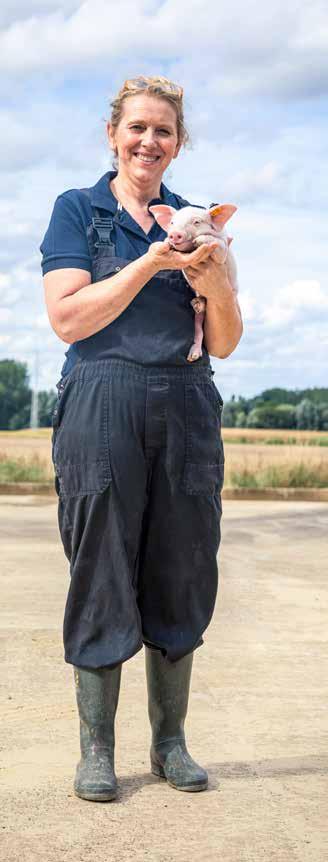
2022 ACTIVITY REPORT
This 2022 Activity Report is the third of its kind for Arvesta. It tells our story – a story we are very proud of – and it allows us to report on our year-to-year progress in a comprehensive and transparent manner.



For more information, check back regularly: www.arvesta.eu
www.linkedin.com/company/arvesta/
3 CONTENTS Foreword from the CEO 4 Stronger Together: Ambitions & Realisations 6 About Arvesta 7 About us: Experts in the field 8 Financial results & corporate governance 10 Key figures 10 Growth 11 Investing in the future 12 Notes about the financial figures 13 Consolidated profit and loss account 13 Consolidated balance 14 Corporate governance 15 Composition of the Board of Directors 16 Composition of the Executive Committee 17 Operational situation 18 Business Unit Animal Nutrition 19 Business Unit Agri & Horti 20 Business Unit Retail 21 From field to fork - sustainably 22 Research, development and innovation 24 Sustainability at Arvesta 26 Mission, sustainability vision, ambition and three pillars 26 Contribution to Sustainable Development Goals 27 Macro trends: challenges & opportunities 28 Double materiality analysis Arvesta 30 Our 36 commitments and some highlights – pillar 1 32 Our 36 commitments and some highlights – pillar 2 34 Our 36 commitments and some highlights – pillar 3 36 Our ten priorities 38 Arvesta Sustainability Dashboards 40 Agricultural and sustainable 42 Sustainable entrepreneurship 58 Care for our people and consumers 66 Looking forward 75 Appendix 76 Editorial information 78
Foreword from the CEO
Eric Lauwers Chief Executive Officer

In the future, there is only space for sustainable agriculture

4
Today more than ever, farmers deserve our wholehearted support. We must assist them in word and deed and, together with them, tackle the challenges of tomorrow. And that is exactly what we are doing. More than ever before, we are pulling out all the stops to continue to build a new agriculture – an agriculture that can only be sustainable. Because in the future, there is only space for sustainable agriculture. And we are doing everything we can to make this a reality. Our innovations, such as the methane-reducing Euroclim feed, ecological alternatives for synthetic fertiliser, precision technology, Carbon Farming, greenhouses, and so much more, are all proving that it is possible in today’s market. Our sustainable innovations unite ecology with profitability.
We continue to grow and invest, for farmers and horticulturists
Arvesta has continued to invest unceasingly in the development of these forwardlooking innovations. Ever since the launch of our Stronger Together transformation project in 2017, we have continued to believe in a new future that unites ecology with profitability. In fact, from 2017 through 2020, we have invested more than 155 million euros in the future of our organisation – IT, production sites, logistics, training... – but, in equal measure, we have also invested in the future of agriculture, especially in agricultural innovation. And for the period 2021 through 2025, we will increase this investment to 275 million euros. This reflects our firm belief in the agriculture of the future. At the same time, as an organisation, we continue to
post strong growth figures (growth for the sixth year running) and to internationalise, and our employee satisfaction has risen to 91%, as shown in our 2022 pulse-check.
Arvesta as an indispensable link in the food chain
Every day, thousands of farmers and growers are working to ensure a healthy and sustainable food supply. What arrives on our plates daily is there thanks to their hard work. Arvesta is an indispensable link in that food chain, especially by way of the expertise and guidance it offers to farmers and horticulturists. We are a unique knowledge centre within the agricultural sector, like the spider in the web that exists between the farmer, the producer, and the retailer/consumer. This allows us to occupy a unique position. The Alken-Maes Brewery, for example, wanted to increase its use of local barley in an effort to reduce its ecological footprint. Just like the people at Alken-Maes, the farmers the brewery asked to grow this barley did not always have the knowledge they needed to tackle this project. That's how they ended up at our door. Our experts then guided the process from start to finish. The result was a successful harvest and a sustainably grown Cristal beer.
Sustainable yet profitable? We prove it can be done.
Economy and ecology absolutely must go hand in hand – if not, we are sure to hit the limits of growth. Is this a challenge?
Absolutely. Are we 100 percent there today? No, we are not. Yet, this is the only way forward, because in the future, there is only space for sustainable agriculture.
One aspect of this sustainability is circularity. For example, Arvesta is developing the fertiliser Haspargit, which is formulated on the basis of residues from the food industry. Not only does Haspargit reduce waste, it also provides extra nutrients to the soil. Today we have already converted 63 percent of the conventional fertilisers used for potatoes to eco-friendly fertilisers.
Another such innovation is Euroclim livestock feed for dairy and beef cows. When cows eat Euroclim, they emit up to 30 percent less methane. This has a huge, positive impact on climate change. If all Belgian cows were to be fed with Euroclim, it would have the same effect, in terms of CO2 emissions, as 130,000 fewer cars on the road every day.
Fighting on equal footing: a level playing field
Beside all the amazing innovations, there is also this critical note: While Belgian farmers do their best to grow crops and cultivate livestock as ecologically as possible, on the other side of the world, less stringent rules apply. For example, greenhouse gas emissions from dairy and beef cows in Brazil are more than double what they are in Belgium. Yet meat and vegetables from all corners of the world can be bought in our supermarkets without a problem.
Belgian farmers are working long and hard to keep our food safe and healthy. Everything here is traceable, there is attention to animal welfare, and the final product is of the highest quality. Very strict legislation applies, and that is just as well. Nowhere can you eat better and healthier food than in our country. At the same time, in our supermarkets you can find Argentinian steak, blueberries from Peru at dumping prices or wine from Chile, countries that use plant protection products and fertilisers that are banned here.
The solution? Well, it lies with three actors. The first of these is the consumers, who still do not stop and think enough about the products they buy. Meat that was flown in is often of lower quality, while, no matter how you look at it, the local alternative is always healthier and more sustainable. Retailers also play a significant role. They must pay the farmers the correct price. Because if we want to ensure that there is financial room to innovate, then we must work hard to ensure that farmers get a correct income for their work. That is certainly not the case today. The government also has an important role to play. Consider our southern neighbours. France has decided to stop importing food products that do not comply with the rules that apply to French farmers. We are in favour of implementing something similar, not only in Belgium, but across the whole of Europe. This is the only way to create a level playing field for all. And we need that, both both on a European and global level.
5
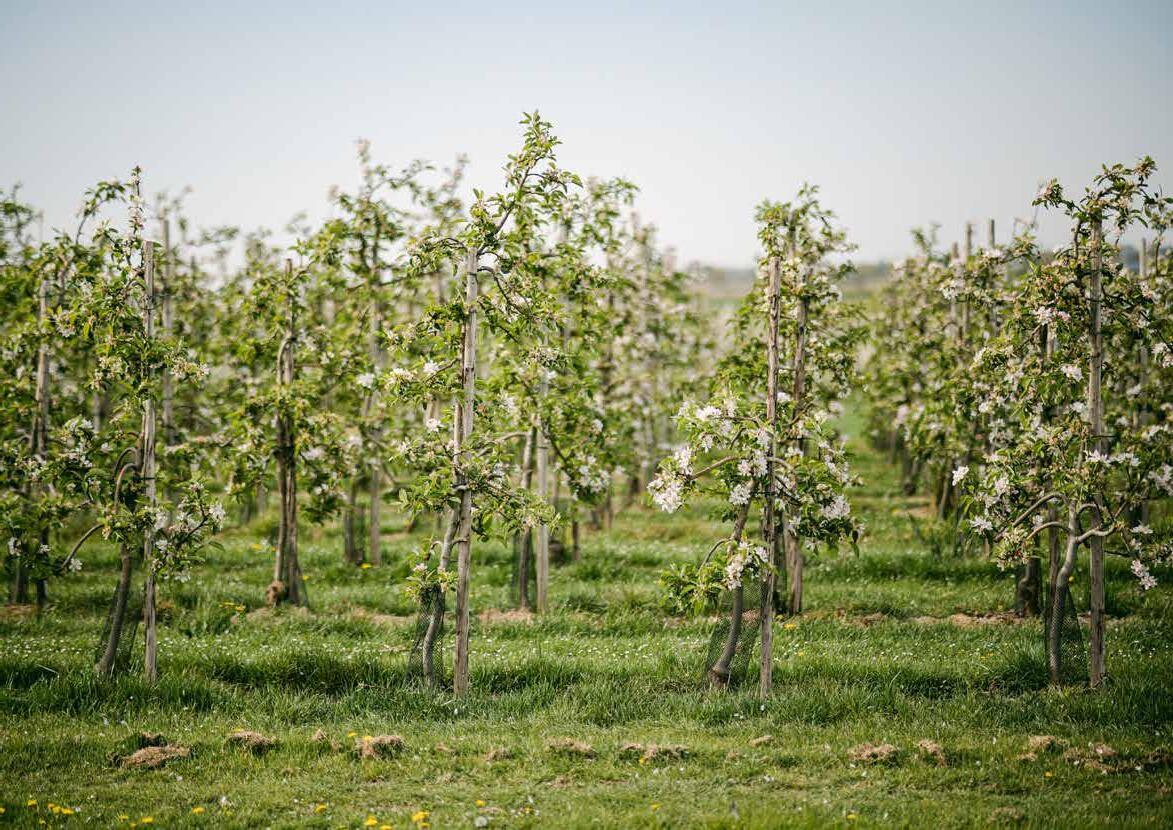



GROWTH FOCUS SIMPL FICATION SPECIALISATION 6 AMBITIONS 2021-2025 → 275 million euros 2021 2025 71% 75% → * *Arvesta currently holds a stake in Van der Hoeven and plans to increase this. 2016 2025 Abroad 10% 30% Belgium 90% 70% Growing international footprint CAPEX INVESTMENTS GROWTH ACQUISITIONS FOOTPRINT PEOPLE ENGAGEMENT 73.7million euros +... EBITDA +50% → REALISATIONS 2017-2020 CAPEX INVESTMENTS GROWTH ACQUISITIONS Net result +74% More than 155 million euros
ABOUT ARVESTA
International activities More than 40 strong brands divided over 3 business sectors
Revenue percentage per business sector
2,300 Experts in the field
200
3
121 years the leading partner for agriculture and horticulture PET SUPPLY STORES

40+ strong brands
€1.9 billion consolidated revenue
€ 69 million investments in innovation, IT and production sites for 2022
RETAIL ANIMAL NUTRITION AGRI & HORTI
Aveve stores
with locations in The Netherlands, Germany and France Eurotuin stores
15 consecutive years 3 consecutive years
1.6
John Deere importer and distributor
14 production sites
50
210,000 m2
stores under own management shopping fun
million tonnes global distribution per year Specialist in both professional and hobby feed
Global leader in Mobile Gully Systems with Hortiplan and greenhouse systems with Van der Hoeven
Belgian market leader in seeds, grains and plant nutrition & protection for all crops
7 RETAIL A G R I & ITROH LAMINA N U TRITION RETAIL A G R I & ITROH LAMINA N U TRITION 15% 40% 45%
ABOUT US | EXPERTS IN THE FIELD
Growth is the key word at Arvesta. Not just any growth, but sustainable growth, for Arvesta itself and for our various stakeholders. That is the driving force in everything we do and, therefore, also in the way we treat our people – our Experts in the field. Sustainable growth throughout their entire careers is our goal for them.
Our objectives 2021-2025
These are our five Human Resources (HR) priorities and how we plan to realise them:
Actions on the agenda in 2023
1 | Offering the employee experience
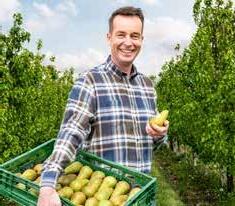
One digital HR platform for all our Experts in the field for:
• The optimal digital experience
• Attracting and keeping top talent
• Less administration
• A secure and General Data Protection Regulation (GDPR)compliant technical environment
2 | Attracting new talent
• Strengthening our employer brand at an accelerated pace ✖
• Continued upscaling of the Young Graduates Program (Also see page 70.)
• Developing and applying adapted working conditions and elaborating and implementing wage benchmarks, together with social partners
• Optimising our onboarding experience
Karin Van Roy Chief Human Resources Officer

Actions on the agenda in 2023
3 | Acquiring the skills needed to succeed together
• Guaranteeing supportive leadership
• Feeling good = performing well: monitoring progress
• Strengthening the Arvesta Academy including > 120 softskills training courses, Commercial Excellence Academy, etc.
• Increasing internal mobility
4 | Strengthening the Arvesta culture and Arvesta leadership in order to promote our mission and growth
• Creating a mobile app based on our mission, vision, and values, for the purpose of reaching everyone, including the blue-collar workers
• Continuing to develop an internal communications cell ✖
• Further expansion of Fit@Arvesta
• Continued sustainability communication


5 | Shaping our HR Department to succeed as a strategic business partner in Europe
• Pursuing operational excellence
• Further transformation into a single, European company

PREPARATION
✖
✖
✖
✖
✖
✖
✖
✖
✖
✖
✖
✖ 8
Achievements in 2022
In 2022, we were able to achieve several HR goals by completing several specific projects:
1 | Offering the employee experience
Connected, autonomous, and supported
In 2022, Arvesta selected SAP SuccessFactors as its strategic and European Employee & HR platform. SAP SuccessFactors will fully digitise Arvesta's HR landscape, offering individualised experiences and strategic solutions that enable employees to reach their full potential. Which gives people a sense of belonging, autonomy, and support.
2 | Attracting new talent
Young Graduates Program
One of the ways that young people find their way to Arvesta is by way of our Young Graduates Program. In 2022, there were more candidates than positions.
We also expanded our Young Graduates Community in 2022 by offering another 7 people a course lasting until 2024. In 2023, we anticipate supporting another 8 people in a course that will then run until 2025.
Employer Branding
The fact that there is so much interest in our Young Graduates Program, for example, is a great feeling. It shows that we have managed to become more visible in a positive way. We have accomplished this via social media, job sites, and job fairs and, in 2022, also through Arvesta's participation in MNM JumpJobs.
By the way, in 2023 we will stand out even more, because in 2022, Arvesta designed a very nice and rather bold employer branding campaign under the slogan “Da’s beestig” [That's wild]. It is actually our own people who are telling the outside world about Arvesta.
Sanac's Junior Sales Club
When five of our experienced people left Sanac for the competition, we did not organise a sector-wide treasure hunt. Instead, we gave five junior sales talents, each paired in a duo with an experienced colleague, the opportunity to advance. It has been a great success – so much so that we plan to set up Clubs like this elsewhere.
3 | Acquiring skills
Arvesta Academy – digital version
To enable our Experts in the field to learn anytime, anywhere, we have invested in the digitalisation of the Arvesta Academy. With FlowSparks, we can capture, structure, and share internal knowledge. In 2022, we launched 27 digital modules in 4 focus areas (onboarding, sales, IT, and retail) and launched the “create your own e-learning” concept. The popularity of the digital Arvesta Academy is not a given. It works because our Academy offers real solutions to real needs. But this is not a coincidence. The approach we take to every training course we offer is based on seeing the employee's perspective: What's in it for me?
Aveve's franchisees will also have access to the Arvesta Academy.
4 | Strengthening the Arvesta culture and leadership
Arvesta Activity Report 2021
Arvesta's DNA is strong and varied, and occasionally it is a good idea to say so. In 2022, the Arvesta Activity Report 2021 was a good example of this. The direct target audience for the report may be external, but the report was written just as much for Arvesta’s own people, and this created internal momentum. We do not make an annual report just for the sake of making an annual report. Just as we don't complete an Engagement Survey just for sake of the survey or set up an Arvesta Academy simply for the course offerings themselves. And just like the HR Tech Tool that we will continue to develop in 2023 is not an IT project but a project that focuses on employee experience. It is always all about the people. Because it is together with our 2,300 experts that we will achieve our successes.
Engagement Survey
We organise the Engagement Survey as often as necessary. During the COVID pandemic, for example, that was sometimes every six weeks. What we really want to know from our people is this: How is it going? Both personally and in your day-
to-day work. That is the essence. Sincere interest in how our people are doing is not a privilege of HR. Every manager must be aware of this; it should be ingrained in their approaches to leadership. Because the world and the work are constantly changing. We make sure our people are ready for this.
5 | Shaping our HR Department
On our way to a single, European company
Arvesta is 70/30 Belgian/European. In 2022, we reinforced our Stronger Together ambitions beyond our own borders. More specifically, in December, the people data from the Netherlands and France were also centralised and harmonised into the single Arvesta system. This is so much more than just a technical operation. It ensures that people can be doing the right things no matter where at Arvesta they are.
Corporate HR Award
Hybrid working and being smarter about being “on the road” was already part of our Arvesta Way of Working, even before we were recognised for it by the Pioneering Employer certificate. COVID has been an extra accelerator. It made us feel like true trailblazers in the Pioneering Employer certification process. In fact, our HR policy has since also earned us a Best Workplace Transformation recognition.
9
FINANCIAL RESULTS & CORPORATE GOVERNANCE
KEY FIGURES

10
(in million EUR) 2022 2021 2020 2019 2018 2017 2016 Turnover 1,911 1,644 1,468 1,396 1,399 1,393 1,337 Gross margin 365 349 324 306 304 298 286 EBIT (Operating profit) 34 39 40 35 44 34 30 Net Profit 25 25 29 26 24 21 16 Number of employees in FTE 2,033 2,056 1,995 1,869 1,883 1,799 1,883 EBITDA 80 79 73 67 73 66 63 Net financial debt 108 149 113 99 113 80 79
11 0 5 10 15 20 25 30 2,000 1,900 1,800 1,700 1,600 1,500 1,400 1,300 1,200 1,100 1,000 16.7 21.2 24.2 26.2 29.1 25.1 +49% 2016 2017 2018 2020 2019 2021 2022 1,337 1,393 1,399 1,396 1,468 1,644 1,911 +43% +16% GROWTH TURNOVER (in million EUR) NET PROFIT (in million EUR) 2016 2017 2018 2020 2019 2021 2022 24.8
INVESTING IN THE FUTURE
12
AC P EXINVESTMENTS 2021-2025: 275 million euros RT A I NING & CULTURE P R ODUCTION
Animal welfare New crops Methane reduction up to 30% I N N O V A T I O N S John Deere precision technology Smart farming Agri Expert app & SMAG
SITES IT SYSTEMS
NOTES ABOUT THE FINANCIAL FIGURES
CONSOLIDATED PROFIT AND LOSS ACCOUNT

The consolidated financial statements of Arvesta BV (the “Company”) include the financial statements of the Company and its subsidiaries (hereinafter referred to as “Arvesta”).
The consolidated financial statements provide a general overview of Arvesta’s activities and the results achieved.
The financial statement is prepared in millions of EUR in accordance with BE GAAP.
The annual and consolidated accounts have been audited by EY bedrijfsrevisoren BV, De Kleetlaan 2, 1831 Diegem, represented by Wim Van Gasse (A-02276).
More information can be found on the website www.nbb.be.
13
(in million EUR) 2022 2021 Consolidated turnover 1,911.5 1,644.3 Cost price of goods sold -1,546.5 -1,295.2 GROSS MARGIN 365.0 349.1 Services and other goods -171.9 -176.7 Remunerations -141.6 -141.1 Provisions -0.2 2.6 Other operating expenses -7.2 -6.5 Produced tangible assets 9.5 26.7 Other operating income (net) 26.6 25.2 EBITDA consolidated 80.2 79.3 Amortisations -42.5 -40.8 Depreciations -3.8 0.3 EBIT (Operating profit) 33.9 38.8 Financial result -4.8 -3.1 Goodwill amortisation -3.8 -4.8 Profit for the financial year prior to taxation 25.3 30.9 Tax -11.5 -12.0 Change in equity share 11.6 7.5 Minority interests -0.6 -1.3 Consolidated profit 24.8 25.1
CONSOLIDATED BALANCE
2022 DEVELOPMENTS
• Turnover up by 267 million EUR (16,3%)
• Gross margin up by 15,9 million EUR (4,6%)
• EBITDA increased by 0,9 million EUR (1,1%)
14 [ ]
ASSETS (in million EUR) 31.12.2022 31.12.2021 Intangible fixed assets 85.2 83.3 Tangible fixed assets 198.5 196.7 Financial fixed assets 26.3 22.8 Consolidation differences 8.0 11.2 FIXED ASSETS 318.0 314.0 Receivables (long term) 1.2 2.1 Inventories 375.3 287.4 Commercial receivables 241.9 229.7 Other receivables 11.9 14.6 Liquid assets 85.7 83.3 Deferred charges and accrued income 4.6 3.4 CURRENT ASSETS 720.6 620.5 TOTAL ASSETS 1,038.6 934.6 LIABILITIES (in million EUR) 31.12.2022 31.12.2021 Equity 509.7 408.4 Third-party interests 4.4 6.4 Provisions 10.3 10.5 Long-term financial debts 178.5 188.8 Short-term financial debts 15.0 44.1 Trade payables 235.1 201.6 Advances 44.6 32.3 Social and fiscal debts 35.7 32.3 Other payables 5.3 10.2 CURRENT PAYABLES 320.7 320.5 TOTAL LIABILITIES 1,038.6 934.6
CORPORATE GOVERNANCE
Corporate Governance Charter
The most recent version of the Arvesta Corporate Governance Charter was approved by the Board of Directors on 8 April 2022.
In this Corporate Governance Charter (the Charter), the Board of Directors explains the main aspects of its corporate governance policy within Arvesta (the Company) and, where relevant, within the group.
The Charter is based on the provisions of the corporate governance code for unlisted companies (Buysse Code III (2017)). It also complements the corporate governance provisions contained in the Companies and Associations Code (CAC (2019)) and the Company’s Articles of Association.
The corporate governance rules aim to ensure efficient and transparent governance of and effective control over the company. The Board of Directors believes that clear corporate governance arrangements contribute to long-term value creation.
The Charter describes the composition, responsibilities and powers of the various bodies of Arvesta and regulates their operation. The Charter aims to provide a clear reference framework for efficient cooperation between the general meeting, the board of directors and management within the company.
Arvesta structure and operation
Arvesta BV has opted for a collegiate management body (“Board of Directors”). The Board of Directors draws up the strategy, is responsible for the general policy, is authorised to perform all acts that are reserved to the Board of Directors by virtue of the CAC and the articles of association and represents the Company.
The Board of Directors manages as a body and is accountable to the General Meeting, which appoints and dismisses the directors and decides annually on the discharge of the directors. The Board of Directors
is also responsible for supervising the implementation of the strategy and general policy by the CEO (Chief Executive Officer or Managing Director) and the ExCom (Executive Committee).
The CEO, assisted by the ExCom, is responsible for the day-to-day management of Arvesta within the strategy and general policy approved by the Board of Directors, and for their implementation. He submits proposals in this regard to the Board of Directors.
The ExCom is responsible for the implementation of the policy. The CEO leads the ExCom. The members of the ExCom report directly to the CEO.
For certain ad hoc matters, ExCom members may be asked to provide clarification during Board meetings. The ExCom members are responsible for developing proposals on the strategy to be followed within their respective areas of competence (business units or corporate functions) and for implementing this strategy as part of Arvesta’s strategy.
Within each BU a “DirCom” has been established which is responsible for the implementation of the strategy within the BU. The DirComs are chaired by the BU Director.
The DirCom is responsible for setting the BU’s budget, which includes the BU’s short-, medium- and long-term strategy.
15
COMPOSITION OF THE BOARD OF DIRECTORS
Patrick Horten
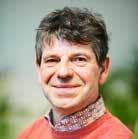
Non-Executive Director
Patrik Haesen
Non-Executive Director
Arvesta's Extraordinary General Meeting on 9 August 2022 took note of the resignations of Messrs Georges Van Keerberghen and Marc Wittemans who had both reached retirement age and resigned their mandates on 31 August 2022.
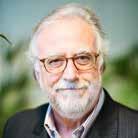

Pieter Verhelst

Non-Executive Director
Marleen Vaesen




Non-Executive Director
Director
Sophie Dutordoir Independent Director
During the meeting, Ms Sonja De Becker, chairwoman MRBB, and Mr Raf Sels, CEO MRBB, were appointed the new Directors of Arvesta. Ms De Becker was also appointed Chairwoman of the Board of Directors.
Rianne Covensvan Tilburg
Non-Executive Director
Upon the proposal of the Board of Directors, the General Meeting decided to extend the mandates of Messrs Horten, Haesen and Verhelst, which had expired at the 2023 Annual Meeting, until 31 December 2023. At that time, Mr Gijsens'

Stefaan Gheeraert
Non-Executive Director
mandate will also expire due to his reaching the statutory age limit. Over the next few months, the Board of Directors will be looking for the right profiles to fulfil these mandates.



16
Eric Lauwers Executive Director CEO
Raf Sels Non-Executive Director
Sonja De Becker Chairwoman of the Board
Kurt Deketelaere Non-Executive Director
Luc Gijsens Independent
COMPOSITION OF THE EXECUTIVE COMMITTEE
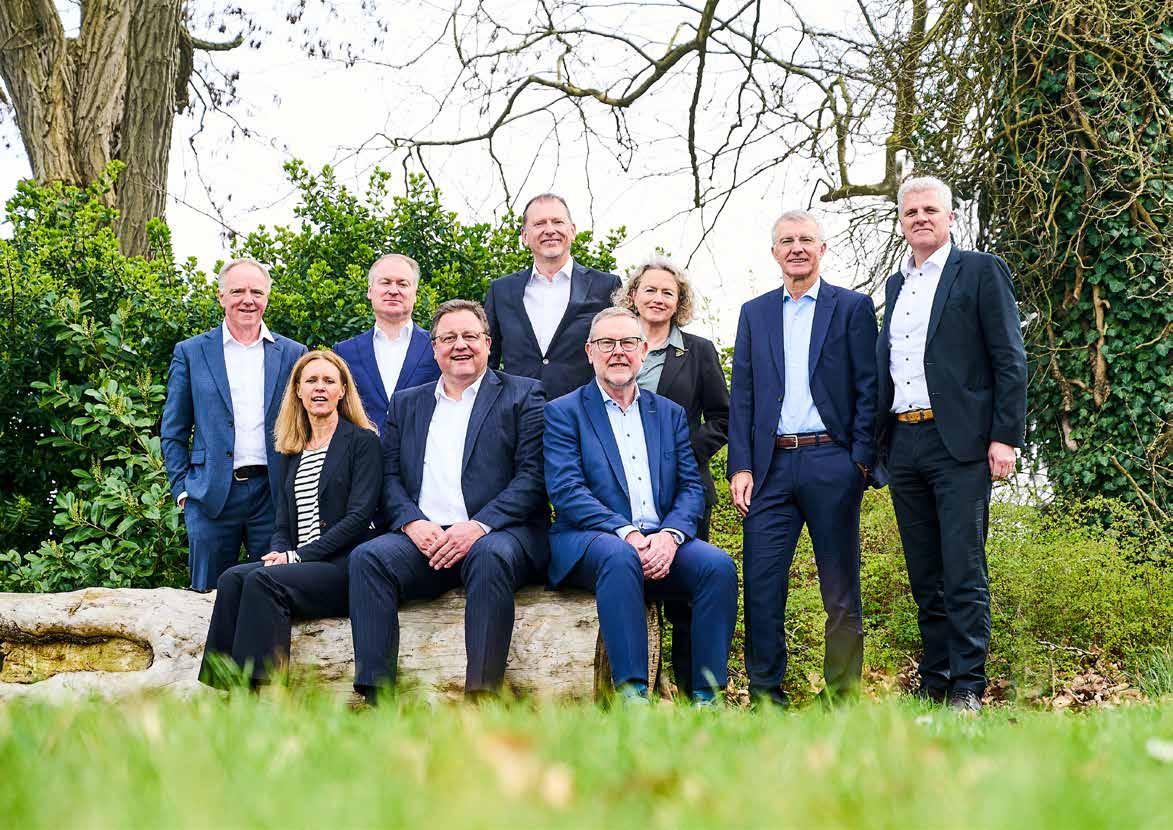
17 Dirk Van Thielen Business Unit Director Animal Nutrition Stefan De Clercq Business Unit Director Franchise & Retail Karin Van Roy Chief Human Resources Officer Niek Depoorter Business Unit Director Agri- & Horticulture Stijn Vermeulen Chief Information Officer Sabine De veilder Chief Marketing Officer Eric Lauwers Chief Executive Officer Kris Geysels Chief Financial Officer Paul Deleu Secretary General
OPERATIONAL SITUATION
Arvesta consists of 3 Business Units















with a total of over 40 brands



Arvesta supports farmers and horticulturists by offering them innovative solutions that further strengthen their entrepreneurship. We are a total supplier of advice and solutions, and our goal is to make our agriculture and horticulture futureproof and resilient in a global market.
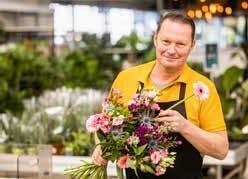


18 40%
ANIMAL N UTRITION 45% 15% n u on on RETA I L AGRI& HO RTI
BUSINESS UNIT ANIMAL NUTRITION




PROFESSIONAL FEEDS







Our Animal Nutrition Business Unit serves all animal groups with high-quality feed, for both professionals and hobbyists. Animal Nutrition is the market leader in this sector in Belgium. This Arvesta Business Unit has 14 production sites spread across Belgium, France, Germany, and the Netherlands. Together, they realise annual sales of about 1.6 million tonnes.







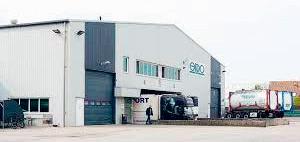

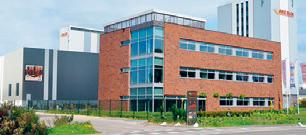








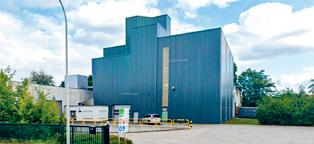

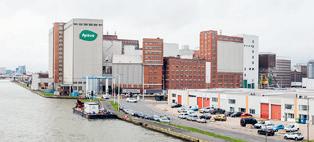

Animal Nutrition in 2022



















In 2022, the Animal Nutrition Business Unit managed to penetrate the market even further with its sustainable innovations. Meanwhile, more than 300 farmers are using the methane-reducing feed Euroclim. The new “Pré de chez nous” label was


launched – a label for delicious, local, and sustainably farmed meat. Arvesta also helped introduce “Beter Leven Kip” [Better Life Chicken]. This concept has led to slower-growing chickens, which are available in many supermarkets today.


19
1 Dumoulin, Kortrijk
2 Aveve Veevoeding, Aalter
3 Lannoo, Erpe-Mere
6 Natural Granen, Schoten
8 Dumoulin, Hombourg
7 Dumoulin, Andenne
5 Natural Granen, Schoten
4 Aveve Veevoeding, Merksem
13 Mifuma, Mannheim
14 Hafner Futter, Ichenhaussen
12 Sabé, Arques
11 Arie Blok, Balgoij
9 Arie Blok, Woerden
10 Palital, Velddriel
14 13 1 2 3 4 5 7 8 6 9 10 11 12 14 13
HOBBY AND HORSE FEEDS FEED
ADDITIVES
BUSINESS UNIT AGRI & HORTI









SEED
AGRICULTURAL AND HORTICULTURAL MACHINERY HORTICULTURE























The specialist and Belgian market leader in seeds and grains, plant nutrition, and plant protection products is our Agri & Horti Business Unit. Agri & Horti consists of various production and storage facilities located in Belgium, the Netherlands, and France, plus some 50 grain depots in Wallonia and Northern France. As a John Deere importer and distributor, we are also active in agricultural and horticultural machinery.




Agri & Horti in 2022
Agri & Horti activities and projects did particularly well in 2022. Thanks to our sustainable innovations, we managed to replace as much as 63% of the synthetic fertilisers used to grow potatoes with ecological alternatives. Together with
Alken-Maes, Dossche Mills, and La Lorraine Bakery Group, among others, we are taking the first steps to introduce Carbon Farming on a large scale. And, with John Deere, our market share for larger farm machinery (+150 hp) grew from 18% to 30%.

20 on 1 10 4 6 5 7 8 9 11 14 13 11 12 3 2 on m on
6 Hermoo, St.-Truiden
5 Pomagro, Tienen
7 Aveve Zaden, Landen
9 Rigaux, Mettet
8 WalAgri, Sombreffe
1 Sanac, Wervik
4 Aveve Plantenvoeding, Geel
3 Hortiplan, Sint-KatelijneWaver
2 Cofabel, Kruisem
13 Vaesken, Arneke
14 Avenir Agro, ForcellesSaint-Gorgon
10 Van der Hoeven, Den Hoorn
11 Benfried, Den Hoorn
m on
12 Alliance, Nieuwkuijk
SEEDS AND
POTATOES PLANT PROTECTION PLANT NUTRITION
BUSINESS UNIT RETAIL
Through our Retail activities, we offer consumers a whole range of high-quality products based on our agricultural expertise. Our store network consists of 200 Aveve shops, some of which are owned by us and others owned by independent business owners, and 3 Eurotuin shops.

Retail in 2022
For the third year in a row, Aveve shops have been voted Retailer of the Year Belgium, which is an absolute first in this category. On top of this, we also scooped up the award for Retailer of the Year Belgium in the Pet specialist shop category for the 15th year in a row. Meanwhile, we continue to work on the rollout of our new shop concept. In doing so, we are giving our shops a complete, fresh makeover, to further inspire our customers and provide an even more enjoyable shopping experience. 100 shops have already made the switch.
21
PET SUPPLY STORES
THE TRUE COST OF FOOD
1
It starts by providing Euroclim feed from Arvesta to dairy cattle. The effect? A reduction in methane production of up to 9%. (Methane is a greenhouse gas that contributes to climate change.) The result? A delicious glass of milk with a reduced CO2 footprint.

2
Delicious meat with a lower CO2 footprint
It starts by providing Euroclim feed from Arvesta to beef cattle. The effect? A reduction in methane production of up to 30%. The result? A tasty piece of meat with a lower CO2 footprint.
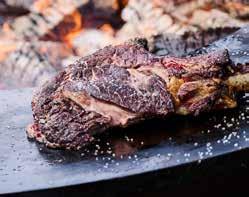
3
Bread made from local grain
It starts by supporting Belgian farmers who cultivate sustainable wheat. The effect? Eco-friendly fertilisation and crop protection, fewer CO2 emissions, less transport, more biodiversity, and a fair price. The result? Delicious, locally sourced bread.
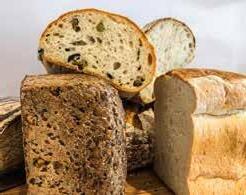
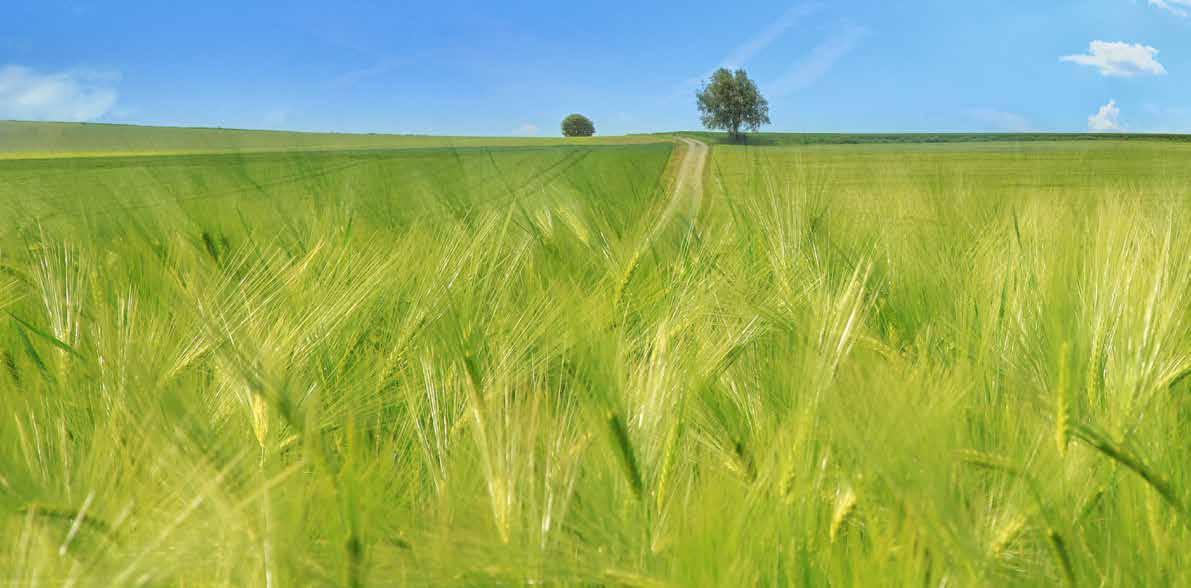
Food concerns us all. A broad consensus on the need for sustainable food continues to gain momentum.
This consensus has not always existed. After World War II, the primary need was for sufficient quantities of food, and people wanted a model that would greatly increase agricultural and horticultural yields. And that worked. In terms of food supply, we are better off today than, say, 100 years ago.
However, what that more profitable model did not do was take into account the true cost of food. The impact on (animal) welfare, climate, water, soil, and biodiversity... these were not priorities then. But over the years, that has changed. The realisation that our food system is not sustainable in the long term due to its heavy pressure on our ecosystem has been gaining ground. And with that realisation, there is now also a growing awareness that the efforts made by farmers to produce food with less environmental impact must be more highly valued.
The solutions are there – so what are we waiting for?
Service providers, with Arvesta in the lead, have become highly motivated to start looking into possible solutions for the food supply of tomorrow. In addition to developing innovative products and services, Arvesta also advocates a fairer earning model for farmers. Because sustainable agriculture and livestock farming require more time, more investment, and more expertise. Of course, we get a lot in return.
22 FROM FIELD TO FORK – SUSTAINABLY
|
|
| Sustainable butter, milk, and cheese
4| Chicken with attention to animal welfare
It starts with balanced, sustainable feed from the leading brand Spoormans for locally reared chickens with longer lives. The effect? A chicken feed that contains all the necessary nutritional elements while, at the same time, having the lowest possible impact on the environment. The result? Healthy animals and delicious chicken meat!

5| Plant-based treats
It starts with pioneering vegetable proteins, such as the duo cultivation of peas & wheat and locally grown organic soy. The effect? More local, raw materials and fewer imports. The result? For farm animals high-quality concentrates as an alternative to imported soy, and for humans, tasty spreads and meat substitutes from De Hobbit.

6| Beer from here
It starts by supporting local farmers to grow sustainable barley. The effect? A short supply chain with a reduction in the impact on the climate. The result? A delicious, refreshing beer from here.


Correct value distribution – a benefit to everyone
Today, some 5 percent of the retail price of a loaf of bread goes to the farmer, while it is exactly there, on the farm, that innovative techniques allow us to reduce the CO2 footprint of a loaf of bread by more than half. We can also significantly reduce the footprint for meat and milk. In terms of CO2 emissions, if all the beef and dairy cattle in Belgium were fed solely the methane-reducing feed
Euroclim, this would be equivalent to 130,000 fewer cars on the road every day.
Nowhere can you eat healthier and safer than in Belgium; our farmers produce the finest quality. If we can give them correct prices and a level playing field, they will continue to do so. One thing is clear: This challenge requires everyone – farmers, their suppliers and advisers, auditing firms, banks, the food industry, retailers, consumers... – to close ranks. Chain partnerships are
required if we want to have a real impact on greenhouse gases, water, and biodiversity, among other things. If the right parties work together, it is possible, today, to move towards a value distribution within our food ecosystem that rewards the correct practices and delivers sustainable and affordable food.
23
RESEARCH, DEVELOPMENT AND INNOVATION
Just like the rest of society, agriculture and horticulture are facing a significant challenge: How do we make the food chain more sustainable? Arvesta, with its research, development, and innovation, has a multifaceted ambition to foster the agriculture and horticulture of today and of tomorrow.
Arvesta always looks at challenges from four different angles:
1. What new services and products does the farmer need?
2. How can we address this in an integrated way on the farm itself?
3. How do we work together with farmers to meet the needs of the food industry?
4. What digital solutions do we need to tackle all of this as efficiently as possible?
Through our bold approach to complex challenges such as global warming, biodiversity, and animal welfare, we have succeeded in being an indispensable link in the food chain.
The future of agriculture and horticulture

Arvesta’s ambition is to guarantee the future of agriculture. We assess the challenges and define the priorities, and aim, together with the sector, at developing more sustainable dairy products, meats, grain products, fruits and/or vegetables. By continuously
developing and offering new products, we help the future of agriculture in its transition to a more sustainable food chain. In this way, Arvesta offers solutions that make agriculture and horticulture a sustainable business model. We are continuously investigating which products can help us achieve a smaller footprint, which products are more efficient, where the opportunities lie for circular alternatives, etc. We then develop those products and test them out. Once they have been perfected, we add them to our product offerings. In other words, in Arvesta, the farmer and the horticulturist have a partner that provides them with:
• Feed
• Seeds & seedlings
• Plant nutrition
• Crop protection
• Machinery
• Horticulture automation
The agriculture and horticulture of the future: Arvesta is more than just its product range
Development Manager

Simon Eyers,
& Horti: ‘Arvesta is more than just its product range. We are also the agricultural and horticultural specialist that provides well-founded guidance, with a view to sustainability and optimisation, to help manage the agricultural and horti-

24
Simon Eyers Business Development Manager Agri & Horti
Quinten De Witte Innovation & Sustainability Manager
Business
Agri
cultural business as a whole. Farm management based on knowledge and data that makes use of technology and digitalisation – that is the agriculture and horticulture of the future. Arvesta helps farmers to stay on the right path and to increase their efficiency, thereby increasing their contribution to a more sustainable food chain.’
Arvesta, the knowledge partner between agriculture & horticulture and the food industry
Today, Arvesta is already playing an active role in making our food chain more sustainable. As an expert mediator between the farmer and horticulturist, on the one hand, and the food industry, on the other, and beyond that to the retailer and consumer, we are the spider in the centre of the web.
In this role, we strive to create added value by way of our innovations, on the one side, by devoting our efforts to obtaining the correct appreciation and fair prices for local agriculture and horticulture. On the other side, we do this by ensuring that what the food industry buys from agriculture and horticulture is produced as sustainably as possible, i.e. with minimal impact on the soil, water and air quality, and biodiversity and with minimum waste and maximum care for the health and welfare of humans and animals. The total share of such collaborations rose sharply in 2022, thanks to partnerships with the Alken-Maes Brewery, Mondelez foods, several flour mills, chicken supplier Plukon and the “Pré de chez nous” meat label, among others.
Local farm, food industry and Arvesta join forces in cultivation contracts and quality labels

The role of expert mediator becomes very concrete in cultivation contracts, with a local farm, on one side, and the food company, on the other. How does it work? The farm can rely on Arvesta's expertise, solutions, and follow-up to ensure that the crop meets the buyer's specific requirements. For this extra effort, the farmer receives a better price, and he is guaranteed a buyer. The food company, in turn, is guaranteed the quality that Arvesta supervises and monitors.
• In 2022, under a cultivation contract with Alken-Maes, the first 200 ha of locally grown malting barley was harvested for the beer brand Cristal. Arvesta supports the local farm so that it can deliver to the brewer exactly the quality of barley needed for this tasty Belgian lager. The fact that the barley is locally grown, by the way, is essential to positioning this beer as truly Belgian.
Read this, too: “From field to fork” on pages 22-23.
• In the context of the Harmony Charter, Arvesta has a cultivation contract at Mondelez for 1,100 ha of grain for the biscuit brand LU. Together with the

local farm concerned and the biscuit brand, we commit to the terms of the Charter, thereby contributing not only to traceability from seed to biscuit but also to a richer biodiversity.
• Via the Belgian quality label “Pré de chez nous”, Arvesta is working with the Euroclim feed concept to promote sustainable and local beef with a lower CO2 footprint. In 2022, 15 Walloon farmers participated, and the meat was sold in some 30 outlets in Belgium.

• Arvesta co-launched the “Beter Leven Kip” [Better Life Chicken] concept. We are making a difference here, as one of the pioneers in Belgium, by motivating and advising poultry farmers to get on board with this concept and by providing them with adapted feed for these slowergrowing chickens. This sustainable chicken can be purchased today at Lidl, Delhaize, Colruyt Group, and Aldi.
Quinten De Witte, Innovation & Sustainability Manager: ‘We are proud of the steps we take together with the food industry towards more local production. We are looking forward to continued structural cooperation, via the farmer, in supporting this sector – and by extension the retail
sector and the consumer – to find solutions for further increasing the sustainability of dairy, meat, grain products, and/or fruit and vegetables. In this way, all of us together can ensure a transition to more sustainable food, today and in the future.’
Arvesta's sustainability ambitions are also directly visible to consumers
Through our retail operations under the Aveve brand, Arvesta is also highly and directly visible to consumers. Our sustainability logo “We Care, We Act” makes it easy for these consumers to see how and where everyday life can become more sustainable thanks to our products. We also use very concrete and practical tips, online and in the shops, to get consumers excited about making a more sustainable world a reality. “A more beautiful tomorrow grows here” is the (English translation of the) title of Aveve's sustainability plan. This plan has three pillars, three ambitions actually, achievable for everyone, with the help of a combination of products and tips & tricks:
• A biodiverse garden
• Happy and healthy animals
• Local delicacies
Read this, too: More on Arvesta's retail activities on pages 21 and 72.
25 WE CARE ACT DUURZAAM | DURABLE
SUSTAINABILITY AT ARVESTA
ARVESTA’S MISSION SUSTAINABILITY VISION
Increasing the profitability of our farmers and horticulturists in a sustainable and innovative way –so that we can grow together – is the reason we come to work each day. Through our agricultural expertise, we also want to give our customers the best professional advice in our Aveve and Eurotuin shops.
Pillar 1 | Sustainable agriculture and horticulture
As an expert in agriculture and horticulture, we offer the most sustainable and innovative solutions and services that guarantee farmers’ and horticulturists’ profitability. This is how Arvesta builds the agriculture and horticulture of the future with its customers and partners.
Arvesta will be more than ever a sustainable and innovative partner for the farmer, horticulturist and consumer of the future by 2025.
AMBITION
Arvesta will be a leader in sustainability for the farmer, horticulturist and consumer through each of the three pillars by 2025.
Pillar 2 | Sustainable entrepreneurship
Together with our employees, partners, and customers, we work on sustainable, safe, and high-quality solutions and services.
Pillar 3 | Care for our people and consumers
We work together for the well-being and safety of our employees. We strive for the best customer experience through our expertise and are committed to sustainable consumption.
26
Arvesta, together with a working group of sustainability ambassadors, has formulated an overarching sustainability vision based on the Arvesta mission.
With concrete ambitions in 3 pillars, we focus on farmers, horticulturists, the planet, and our employees and consumers.
Together with more than 50 of our experts, we have translated these ambitions into 36 commitments (see overview on pages 32-37). Numerous commitments are further explained by means of stories of achievements, actions and ambitions.
From the 36 commitments, we selected 10 sustainability priorities with measurable targets (see pages 38-39).
Starting in 2022, the 10 priorities were measured and monitored using an internal sustainability dashboard to measure progress against targets and to gain data-driven
Arvesta is particularly focussing on the following United Nations Sustainable Development Goals:


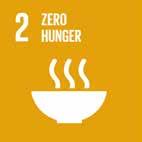
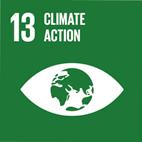


insights into current facts and figures. (See pages 40-41.)
A double materiality analysis was carried out in 2022. (See pages 30-31.) From this, we learn which themes are most important to Arvesta and where we can make the greatest impact. We are currently reviewing our 10 priorities based on the lessons from the materiality analysis.
As a company, Arvesta falls within the scope of the Corporate Sustainability Reporting Directive and is preparing to report on FY2025 in 2026.
Arvesta is continuously developing more sustainable and, simultaneously, more productive agriculture and horticulture processes, through innovations and technologies, with continuous advice for the farmer and horticulturist and by continuing to develop products and concepts with an eye for greater animal welfare and safety.
Arvesta aims for responsible economic growth, for itself and for the farmer and horticulturist, with committed employees and satisfied consumers.
Arvesta innovates sustainably in its own operations, with optimum traceability for its products, decreasing CO2 emissions both internally and externally, and realising a performance level of ‘good’ on the BREEAM standard for new buildings from 2020.
Arvesta is working with its customers and partners to make the food chain more sustainable, from field to fork, by committing to a sustainable purchasing policy for all its companies and by creating more transparency about the sustainability aspects of its value chain.
Arvesta is fighting climate change through its commitment to achieving CO2 reduction and also by reducing its direct impact, e.g. by ensuring 20% of its company cars are hybrid or electric by 2024.
As an expert in realising the agriculture of the future, Arvesta is the direct partner of farmers and horticulturists on a daily basis and acts as a constructive and accessible discussion partner for governments, the media and civil society.
27
MACRO TRENDS
CHALLENGES & OPPORTUNITIES
Our aim is to increase the profitability of our farmers and horticulturists in a sustainable and innovative manner so we can grow together. To achieve this, it is important to have a good understanding of the world around us. Market conditions are changing, and companies are expected to be resilient.


We regularly review our value propositions so we can respond to the changing conditions in our environment and so we can create more value for our customers. To properly align our strategic direction with the latest developments in our markets, we take into account the following important, macro trends that shape our operating environment:
Consumer focus and awareness
• Changing purchasing decisions and habits
• Call for supply chain transparency and traceability and for sustainable products
CHALLENGES
Companies will only be able to maintain their “licences to operate” if they meet the necessary consumer demands.
OPPORTUNITIES
Changing consumer demands create opportunities for the use of new products and services.
Climate change
• Climate risks and opportunities (extreme weather conditions / new products and business models)
• Expectations for setting ambitious decarbonisation targets
Pressure on natural systems
• Loss of species and ecosystems due to climate change, pollution, changes in land use, and invasive species
• Scarcity of natural resources and ecoservices and the decline in circular products and business models
• Chronic and acute water shortages or flooding
• Decline in soil quality due to intensive practices and the nitrogen and phosphorus load
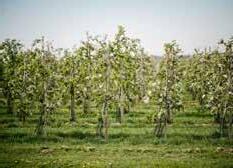
CHALLENGES
The farmers, Arvesta, and their partners largely maintain their “licences to operate” on the basis of how and whether they meet the expectations of the agricultural sector and the rest of the chain. Failure to respond to these requirements and expectations could lead to a further loss of agriculture in our region, with a possible shift of production to regions with less regulation – with greater environmental impact as a result.
OPPORTUNITIES
We continually respond in a proactive manner to trends within and beyond the sector. One way Arvesta does this is by being a pioneer in the Carbon Farming approach and by developing associated products, techniques, and services for the chain and the farmers. Arvesta does this by being a trendsetter in new techniques that increase yields and reduce impacts on soil, biodiversity, and water use. Feeds are increasingly being produced using raw materials from the circular industry and/or from sources that do not compete with human food. We develop products to reduce greenhouse gas emissions (see p. 48 among others) and systems to reduce water use (see p. 46 among others).
28
Disruption of the global supply chain

• War in Ukraine and changing geopolitical factors
• Natural disasters
CHALLENGES
Intensive global value chains with limited resilience to shocks and limited buffers make it a challenge to maintain production and keep prices under control in the face of exogenous shocks.
OPPORTUNITIES
The Belgian and European agricultural sectors can create "shock resistance" by providing for the production of essential products within Europe.
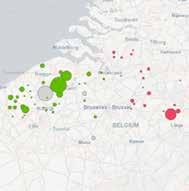

Digitalisation and automation

• Internet of Things
• Big Data & Analytics
• Artificial intelligence
• Metaverse
• Blockchain
• Privacy and data security
CHALLENGES
Consumers and retailers expect intensive digitalisation and automation in the food chain so that they have access to greater transparency and traceability.
OPPORTUNITIES
Comprehensive digitalisation increases the service provided to customers, reduces their workloads, increases efficiency, and offers clear traceability.
CHALLENGES
• Companies should work on and safeguard good governance throughout their operations and with all stakeholders (employees, suppliers...), e.g. by means of a Charter.
• A society in continuous evolution expects companies to adhere to clear policies relating to diversity, equality, and inclusivity.
CHALLENGES
Evolving regulations and policies related to agriculture and climate change can lead to uncertainty, unexpected changes in the legal framework, and additional costs for the farmers and the rest of the chain.
OPPORTUNITIES
Protection of humans and basic rights
• Awareness of human rights (including within the supply chain)
• Greater importance of diversity, equality, and inclusion
• Social and employee activism
• Keeping our finger on the pulse of the social dialogue requires continuous contact with the various social partners.
OPPORTUNITIES
Constantly monitoring and responding to an evolving society and human rights ensures that we can give our employees every opportunity to develop to their full potential.
Transparency
• Increased focus on corporate reporting (including sustainability reporting)
• Evolving regulations with a focus on sustainability transparency (CSRD, EU Taxonomy...)
By developing standardised ESG reporting, Arvesta can better understand the organisation's environmental performance, social impact, and governance structure. This can help us to focus more clearly on areas for improvement and to communicate about the results achieved. It can also help meet the expectations of more and more stakeholders and potentially attract sustainability-conscious investors and customers.
29
DOUBLE MATERIALITY ANALYSIS ARVESTA
• prepare for the Corporate Sustainability Reporting Directive (CSRD), which Arvesta will have to comply with starting in 2025.
Not a traditional materiality analysis, but a double one
Arvesta opted for a double materiality analysis, i.e. an analysis with a dual perspective. In other words, we made an appraisal of the various ESG topics:
• what are the positive and negative impacts of Arvesta on society and the environment = from the inside out the impact materiality on the y-axis of the matrix;
• what are the positive and negative impacts of the topic on Arvesta's (financial) success = from the outside in the financial materiality on the x-axis of the matrix.
Arvesta invested in a double materiality analysis in 2022 (Material = relevant, essential, and crucial in this context). This analysis identified the ESG topics most crucial to Arvesta.
A materiality analysis for a sustainability policy that is even more grounded in expertise

Arvesta has, of course, been integrating ESG (Environment, Social, Governance)
into its operations for much longer. (See our Activity Reports 2020 and 2021, among others.) To achieve an approach to our ambitions that is even more grounded in expertise and to critically evaluate whether we are covering all impactful domains with
our sustainability strategy, we invested in a double materiality analysis, conducted under the guidance of KPMG, in 2022. This analysis resulted in a materiality matrix that allows us to:
• challenge Arvesta's existing sustainability strategy by identifying potential lacunae;
• build engagement related to sustainability among Arvesta's own Experts in the field and its relevant external stakeholders;
To inform itself broadly about which ESG topics could be potentially relevant for its business, Arvesta consulted various sources: peers and sector federations and what they see as their strategic ESG topics, the press and what the significant ESG topics are there, and the existing sustainability standards (such as SASB, GRI, and WBCSD). Arvesta also looked, of course, to what it had formulated for itself as sustainability priorities in the past.
30
This exercise first resulted in a long-list of 41 ESG topics, which could ultimately be reduced (including by classifying and filtering them) to 14 topics. To do this, the topics were examined to determine which of them were relevant to the agriculture, horticulture, and retail sectors.
After that, it was a matter of correctly prioritising the topics. We invited some 70 internal and external stakeholders to comment on Arvesta's impact on the various themes. We had an interview with a bank, and we organised a workshop with Arvesta's Executive Committee and several
internal experts. This allowed us to assign the topics a score, which the materiality matrix clearly visualised. The matrix clearly shows which topics are essential from one or both perspectives – see the coloured fields. The most essential of all 17 topics (the top-5) are shown at the upper-right:
• Customer and consumer satisfaction
• Soil Management
• Healthy and accessible food
• Sustainable innovation
• Climate change
Looking forward
The identification of 17 strategic ESG topics allows Arvesta to pursue its sustainability policy even more effectively and efficiently from now on:
Based on the new insights from the double materiality analysis, we are re-evaluating our priorities and making adjustments where necessary.
To track the progress of its priorities and commitments, Arvesta also invested in 2022 in the development of sustainability
dashboards. (See pages 40-41 of this Activity Report.) This tool will also be adapted to the output of the materiality analysis.
The double materiality analysis will be reviewed annually, and adjustments will be made where necessary.
In line with the double materiality analysis and against the background of the political ambition to achieve climate-neutral agriculture by 2050, Arvesta will also define its longer-term vision in 2023.
31 MATERIALITY MATRIX ARVESTA 2022 Responsible use of data Impact materiality Financial materiality Sustainable innovation Soil Management Customer and consumer satisfaction Biodiversity Healthy and accessible food Climate change Regional production and wealth Responsible sourcing of raw materials Water management Energy management Animal welfare and health Packaging Health, safety, and fair labour Employee satisfaction Diversity, equity and inclusion Resource use and waste management 4,5 4 3,5 3 2,5 2 1,5 1 0,5 0,5 1 1,5 2 2,5 3 3,5 4 4,5
Y X
OUR 36 COMMITMENTS AND SOME HIGHLIGHTS
Develop sustainable agriculture and horticulture
Offer sustainable and high-quality solutions
●●○ Develop sustainable offerings
●●○ Increase advice on sustainable agriculture and horticulture

Develop smart agriculture and horticulture

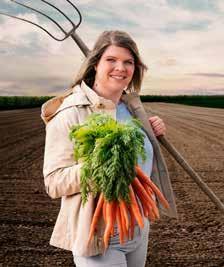
●●○ Use technology for efficient agriculture
●●● Use data responsibly
Reduce the climatic and environmental impact of agriculture and horticulture
●●○ Improve the carbon content of the soil
1PILLAR FOR FARMERS AND HORTICULTURISTS
●●○ Promote the use of low-impact plant protection products
●●○ Optimise the composition of products
●●○ Improve the traceability of products
●●○ Conduct R&D on sustainable agricultural and horticultural practices
●●○ Reduce methane emissions
●●○ Consult with chain partners regarding sustainable and innovative agriculture
32 Progress of our commitments: ●○○ Launch ●●○ Busy ●●● Achieved
BlueN penetrates the plant through its stomata and rapidly colonises the intercellular spaces of the green parts of the plant. After this penetration, it grows along with the plant.
●●○ Develop sustainable offerings
BlueN converts nitrogen gas (N2) from the air into ammonium (NH4), which is then converted into amino acids by the plant. In this way, BlueN provides the plant with nutrition throughout the entire growing season.
The future belongs to foliar fertilisers and biostimulants

Arvesta encourages the use of foliar nutrition and biostimulants (products that can increase plant resistance) as soon as leaves start forming on the plant. After all, with foliar fertilisers, you apply nutrients in a very targeted way at the ideal time and at a much lower dose than with conventional fertilisation. By applying the nutrients directly
to the plant and not in the soil, the plant can directly absorb the nitrogen. Biostimulants themselves do not contain nutrients. What they do instead is adapt to the climate. They make plants more resistant to stress (heat, drought, etc.) so they can absorb nutrients from the environment more efficiently, e.g. nitrogen from the soil or from the air.
Read this, too:
More on the foliar nutrition N-Leaf and the foliar fertiliser BlueN on page 48.
●●○ Promote the use of low-impact plant protection products
The use of crop protection products will have to be reduced by half by 2030 – an ambition agreed at the European level. In 2020, this ambition encouraged Arvesta to elaborate its strategic vision on the topic. Arvesta's focus is twofold: it involves, on the one hand, replacing chemically active substances with biological control agents and, on the other hand, reducing the dosage of active substances by boosting their efficacy by way of other substances which have smaller impacts (adjuvants).
Guillaume Colmant,
Technical Manager Crop Protection Products:
‘Arvesta's testing capabilities and experience allow it to play an active role in what are currently niche products but will soon become mainstream products.’
Vertipin, a fungicide based on sulphur and pine terpenes which is already widely used in grain and flax cultivation – on some 20,000 ha in total in 2022 – is already a big hit.

33
Arvesta is active in the shift to organic crop protection
Source: Corteva Agriscience
Consistent nitrogen delivery to the plant Requires no energy from the plant
BlueN guarantees effective and controlled nitrogen supply, obtained organically, to the plant
1 2
OUR 36 COMMITMENTS AND SOME HIGHLIGHTS
Promote sustainable entrepreneurship
Focus on animal welfare and animal safety

●●○ Install a charter on animal welfare and safety for directly owned animals
●●○ Present ourselves as a leading discussion partner regarding animal welfare and safety
2 PILLAR FOR OUR PLANET
●●○ Reduce antibiotics in animal feed
Focus on efficient production
Focus on efficient distribution
●●○ Optimise energy consumption
●●○ Optimise water consumption
●●○ Optimise CO2 emissions linked to production
●●○ Reduce waste/recycle more
●●○ Bring new buildings up to BREEAM standard
●●○ Make company fleet more sustainable and promote sustainable alternatives
●●○ Develop a sustainable purchasing policy

●●○ Reduce CO2 emissions from own transport
●●○ Push for alternative transport modes
●●○ Optimise the load and fill factor of freight transport
Progress of our commitments: ●○○ Launch ●●○ Busy ●●● Achieved
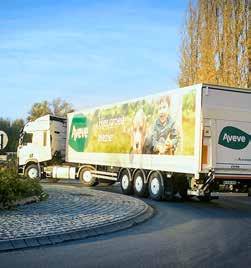
34
Dark weather, poor visibility, inattention due to a busy schedule, a larger feed intake than expected... These are just some of the common causes that complicate the monitoring of feed levels in silos. So, Arvesta set out to find a solution for farmers – the silo sensor.
●●○ Optimise water consumption
For new Aveve shops and renovations, both under our own management and in “buildto-suit” concepts with a developer, Arvesta insists on a rainwater recovery capacity of 30,000 litres per site. That is 20,000 litres more than the government's proposed 10,000 litres. Arvesta decided to commit to this extra effort because our stores demand more that the average quantity of water. Not only do we rely on this rainwater for flushing toilets and for cleaning, we also use it to maintain our plants.

Today, in at least half of its own stores, rainwater recovery to the tune of 30,000 litres is already a reality.
Our new headquarters in Wilsele, which will be in use by the end of 2023, has already had an additional 20,000-litre cistern installed. Together with the 20,000-litre well that was already there, that makes 40,000 litres of rainwater. According to our calculations, this will cover the entire demand when 100 to 120 people are (soon-to-be) working here.
●●○ Reduce CO2 emissions from own transport
The silo sensor is affixed with adhesive to the top of the silo (no drilling required) and is protected from rain and wind by a hood.
It continuously measures the volume in stock and transmits that information to a platform where the volumes are converted into tonnages. These tonnages are visualised to the farmer in a clear manner, giving the farmer accurate insight into the feed throughput and current tonnages, and it does this anytime and anywhere, on the smartphone or PC. From the moment the silo reaches a certain minimum volume, the farmer receives an e-mail reminder to order feed on time.
The result? More efficient operations without worries.
The aim is to evolve towards automatic silo refilling, so the farmer can eventually skip the order entry step all together. In this way, Arvesta gets a better overview of all feed deliveries to be carried out, and it can plan its transport more efficiently, resulting in fewer kilometres and fewer CO2 emissions.
The sensors work completely autonomously. Their powerful batteries have a service life of approximately five years, and the sensors are equipped with their own internal data networks.
35
Rainwater recovery three
80 % 80% › › ‹ ‹ ‹
times better than the target
Silo sensors optimise feed deliveries
Care for our people and consumers
Increase the safety, health and well-being of employees


Focus on sustainable employability
●●○ Raise awareness about safety with a view to ‘zero accidents at work’
●●○ Apply a uniform EHSQ approach
3 PILLAR FOR OUR SOCIETY
●●● Continue to develop our health policy
●●● Develop a policy related to ‘corporate volunteering’ for employees
●●○ Continue uniform policy concerning diversity and non-discrimination
●●● Develop training and development opportunities
●●● Raise awareness and provide training on sound business operations
Focus on sustainable and high-quality solutions for the end consumer

●●● Deliver excellent quality in products and services
●●○ Supply certified sustainable products
●●○ Reduce sugar and salt content
●●● Promote local products/short supply chains
●●○ Raise consumer awareness regarding sustainable consumption
36
Progress of our commitments: ●○○ Launch ●●○ Busy ●●● Achieved
OUR 36 COMMITMENTS AND SOME HIGHLIGHTS
Compliance with the competition regulations
●●● Develop a policy related to ‘corporate volunteering’ for
employees
Arvesta offers its employees the chance to switch jobs for a day. A great example of an opportunity to take a peek behind the scenes is the Helping Hands campaign. During the high season – from March to June – colleagues


from other departments can come work for two days in an Aveve or Eurotuin shop. It has been a great success and certainly a win-win. In 2022, 30 employees participated; we expect more than double that in 2023. Meanwhile, we have been asked to expand Helping Hands’ opportunities, and we certainly are considering it. After all, Helping Hands is another great example of our philosophy, Stronger Together.
●●● Raise awareness and provide training on sound business operations
Arvesta has a very active “competition compliance” programme which covers competition law, the rules related to price fixing, information sharing, etc. For every new employee who comes into contact with suppliers, customers, and/or competitors, this programme begins with a mandatory, in-person training.
Ilse Winters, Legal Director: ‘Participants are always enthusiastic about the interactive way in which we manage to convey this legal material. For this purpose, we work with our external partner Contrast Law. We also handle the
training follow-up, as creatively as possible, together with them. For example, the website that was developed especially for Arvesta is kept up to date and running by the regular addition of “cartovies’ – animated cartoons –from Lectrr. This website also contains all the relevant presentations and guidelines and a comprehensive Q&A. All those who have ever participated, some 450 employees by now, must successfully complete the “competition compliance” quiz every year. Those who do not score an 8/10 or higher must go back to the start – back to the in-person training. This way we keep awareness related to “competition compliance” on point.’

37
Like to try working in one of our shops? No problem!
OUR TEN PRIORITIES
Pillar 1 | for farmers and horticulturists Develop sustainable agriculture and horticulture
We offer the most sustainable and innovative solutions and services that guarantee the profitability of farmers and horticulturists. This is how Arvesta builds the agriculture and horticulture of the future together with its customers and partners.
This overview shows the progress made on our ten priorities. Each Key Performance Indicator (KPI) indicates the evolution we have made towards the target. (Also see pages 76-77 for more explanation and for definitions of the KPIs.)
1 2 3
CH4 Reduction of methane emissions
Pillar
2 |
Share of the total mass of purchased conventional soybean meal that is sustainable, in %:
Annual water savings, in billions of litres, among farmers and horticulturists as a result of innovative developments by Arvesta (Hortiplan only):
The evolution of methane emission reduction by cattle customers using the Euroclim product:
for our planet Promote sustainable entrepreneurship
5
by 2028 ANTIBOTIC-FREE
Share of the total mass of feed for piglets, fattening pigs, and sows that does not contain antibiotics:
In 2022, we are on the right track to achieve our target of 100% sustainable soy by 2026. In 2021, this share was exceptionally high, but also in 2022 we are fully on track to achieve our target.
Using a modified calculation methodology based on more substantiated sources and data, we determined that we could save much more water in 2022. The target for 2025 is a global water savings of 8 billion litres as opposed to 3 billion litres.
The switch to Euroclim feed remains a challenge. We are focussing on Belgian customers, and we continue to set the bar at a 50% Euroclim conversion by 2025. Recent support from the Flemish government is helping to make progress here.
4 Annual reduction of CO2e*
Together with our employees, partners, and customers, we work on sustainable, safe, and high quality solutions and services.
When it comes to sustainable animal feed, Arvesta continues to remain some two years ahead of the goals on antibiotic use set by sector federation BFA. In 2022, we are fully on track to meet the target.
Key challenges
Good progress with challenges On track Target
* More information on Scope 1 & 2 emissions can be found on page 52.
38
Global
5.9 6.05 8 2021 2022 2025 12.3% 12.9% 50% 2021 2022 2025
100% certified soy 82.1% 68.2% 100% 2021 2022 2026
water savings
CO2e
99.2% 99.6% 100% 2021 2022 2028
6
7

20% of our company vehicles are hybrid or electric Transport > 50% of raw materials by water
Share of the total mass of materials imported by barge to Animal Nutrition and Agri & Horti sites:
Share of hybrid or electric vehicles in Arvesta's fleet, excluding temporary cars for newcomers:
Pillar 3 | for our
society Care for our people and consumers
Despite some challenges in 2022, we met and achieved our target. We even did slightly better than the set objective of 50%, namely 52.3%.

We are well on track to meet our target by 2024. The somewhat slower progress that we see today in the number of electric or hybrid cars within our fleet is related to the extremely long delivery times for these cars.
We work together for the wellbeing and safety of our employees. We strive for the best customer experience through our expertise and are committed to sustainable consumption.
8 9 10
0
Aim for accidents
The number of occupational accidents resulting in absence from work per year involving Arvesta's permanent staff and job students:

Percentage of permanent employees, job students and contractors who registered for Fit@Arvesta:


Consumer packaging bread and baking mixes with recyclable monoplastic film

Share of mixes produced by Arvesta with recyclable packaging:
Reducing workplace accidents remains a point requiring special attention. For Arvesta, safety at work is an extremely important priority. The total number of accidents has fallen, but every accident is one too many.
In 2022, we started counting our registrations on the Fit@Arvesta platform differently. We only count unique users, unlike in 2021, when duplicate registrations still occurred. Not only did we make progress, we now have a more accurate picture due to a better counting method.
We are progressing right on schedule with this target. By the way, this is just the beginning. We are also looking at whether it is also possible to make other packaging (e.g. pet food) more sustainable.
39
56.5% 52.3% >50% 2021 2022 1.1% 1.6% 20% 2021 2022 2024
Fit@Arvesta participation 47.2% 48.1% 100% 2021 2022 2028 49.8% 67.5% 100% 2021 2022 2023
51 45 0 2021 2022
ARVESTA SUSTAINABILITY DASHBOARDS

FOR THE CONTINUOUS MONITORING OF OUR SUSTAINABILITY AMBITIONS
LANDING PAGE WITH KPI OVERVIEW
Example of an underlying page – here on the reduction of antibiotics in animal feed

40
In order to monitor our sustainability priorities even more efficiently, Arvesta developed the Arvesta Sustainability Dashboards in 2022.
The motivation
It has long been Arvesta's ambition to be a leader in the area of sustainability. To this end, we have defined our sustainability priorities in recent years – in other words, what are our priorities in the areas of Environment, Social engagement, and Governance – and we have set targets for each. (See the Arvesta Activity Reports 2020 and 2021 and pages 38-39, Our ten priorities.)
Defining priorities and agreeing on goals is one thing, realising them in practice is what really matters. The only way to achieve goals is to work on them every day. The only way to see if we are doing well is to monitor the results step by step. Therefore, in order to monitor our sustainability priorities even more efficiently, Arvesta’s IT Department developed the Arvesta Sustainability Dashboards in 2022, under the guidance of KPMG. The aim of these sustainability dashboards is threefold:
• To monitor our progress
• To provide actionable insights that allow for the acceleration of decision-making processes
• To provide transparency
The dashboards
On the landing page of Arvesta's Sustainability Dashboards, you see a Key
Performance Indicator (KPI) overview. This dashboard page allows you to see, at a glance, the progress that has been made for each of the defined sustainability priorities.
From this KPI overview on the landing page, it is then easy to click through to the underlying pages. Each of Arvesta's sustainability priorities has its own page containing detailed information presented in a very clear way. This information includes:
The agreed target and the progress, clearly showing the date when the information was last updated
Additional, specific, valuable information per priority
• In the example, this is relevant information about antibiotics in livestock feed. In these pages, our experts can easily find which customers buy more feeds with antibiotics, within which category of feeds, etc.
A clear overview of the sources used to monitor the progress
The name of the person responsible for the data update
Dirk Konings, Business Intelligence Manager Arvesta: ‘Formulating a precise definition of our sustainability priorities proved to be a challenging but extremely interesting exercise. It has contributed significantly to an even greater increase in awareness regarding the sustainability issues.’
Input and output
For each of the sustainability priorities, Arvesta designated a topic manager and an input manager:
• The topic manager is responsible for achieving the targets, identifying new products or segments to be taken into account when calculating performance, and monitoring data quality.
• The input manager is responsible for updating the data in a timely manner, checking any automatic data updates, and correctly reflecting any functional changes in the data source (e.g. changes to classification labels of a feed type).
Each priority also features a list of which specific stakeholders, if any, are included in the communication. All stakeholders received a Sustainability Dashboards Reporting Manual.
So much for the input. On the output side, Arvesta is formal. The sustainability dashboards must be accessible to all our Experts in the field, without any access restrictions. That means that everyone at Arvesta can follow how well Arvesta is doing on its sustainability ambitions at any time. The detailed dashboards are designed to meet the needs of those involved in the specific topics. Taken all together, the Arvesta Sustainability Dashboards should provide data-driven insights, maintain awareness of the business best practices, and enable us to make the right decisions quickly.
Quality control
When the development of the first version of the Arvesta Sustainability Dashboards was complete, sometime around the summer of 2022, Arvesta subjected the tool to an external audit performed by Ernst &Young. This process is called an “assurance readiness assessment”. In other words, the thrust of this audit was to assess the data collection, reporting, and control processes as developed by Arvesta for calculating the indicators in the sustainability dashboards. This audit was carried out by means of analyses, interviews, risk assessments, and discussions. The aim was to identify (potential) areas for improvement and to test whether the data were accurate, complete, reliable, and comparable.
The findings of this assessment led to recommendations and, from there, to an action plan for further refinement of the Arvesta Sustainability Dashboards.
Dirk Konings Business Intelligence Manager Arvesta

41

FOR OUR FARMERS AND HORTICULTURISTS
Agricultural and sustainable

We offer the most sustainable and innovative solutions and services that guarantee the profitability of farmers and horticulturists.
This is how Arvesta builds the agriculture and horticulture of the future together with its customers and partners.
43
by 2026
PROTEIN IN CATTLE FEED Arvesta’s dual-track policy: more sustainable soy + less soy
When it comes to soy, Animal Nutrition from Arvesta remains even more ambitious than the Amazon Soy Moratorium, which forbids the use of soy from newly deforested areas. The Belgian Feed Association (BFA) has also committed itself to this policy. This does not detract from our commitment to ensure that by 2026 all the soy (meal) we use as a raw material for our livestock feed be certified soy (meal). The figures prove once again that we are right on schedule: In 2022, 68.2% of the soy used was certified soy (meal).
tion. So now, when selecting raw materials, we also systematically include alternative, stable protein sources such as rapeseed, DDGS, sunflower seeds, field beans, broad beans, peas... We consider the differences in their intrinsic nutritional quality versus other parameters such as price and transport.
No more protein than necessary = no more soy than necessary
Filip Vanmeirhaeghe, Senior Procurement Manager (Raw Materials) Animal Nutrition:


The 5% soy bean content in Arvesta's livestock feed is non-modified soy exclusively from Europe, from France, Hungary, Austria, and Ukraine, among others.
More sustainable soy and less soy

The policy that Arvesta is pursuing is a dual-track policy. On the one hand, we are striving for more sustainable soy, and at the same time, we are also searching for a responsible way to reduce our use of soy. After all, using less soy is also a way to increase the sustainability of livestock feed produc-
‘Of course, offering balanced cattle feed remains our goal. We rely on the expertise of our nutritionists when it comes to finding the right balance. The balanced production feeds for dairy cattle from Arvesta no longer contain soy meal. A balanced animal feed for a young animal, for example, requires more soy/protein than a balanced feed for an adult animal. We will always strive to find this precise balance; in other words, we won’t utilise more protein than needed.’
More sustainable raw materials result in more sustainable livestock feeds
By increasing the sustainability of the cultivation process of a raw material, you also make the animal feed that utilises this raw material more sustainable. In response to this, Arvesta’s strong brand Walagri is carrying out some significant
experimentation with mixed crops of wheat and peas. Peas capture nitrogen from the air and pass that advantage along to the wheat, which means that the wheat requires less artificial nitrogen (fertiliser, in other words). In this way, Animal Nutrition obtains a kind of ‘pre-prepared mixture’ with a limited ecological footprint. Hybrid rye (a cross-fertilisation of two varieties of rye) is another example of this. This specific rye variety requires less water and is more resistant to moulds, which means it also requires fewer crop protection products. And that gives Animal Nutrition yet another raw material that is friendlier for our planet.
Arvesta is also a pioneer in a 360° approach
Patrick Boone, Director Procurement Animal Nutrition: ‘Gradually, for all our raw materials, we are evolving toward a kind of carbon footprint score – a score that takes into account the carbon footprint of the entire chain. As the largest Belgian manufacturer of compound feeds, Arvesta also has a prominent role to play in this 360° approach. At the same time, we are only one of many links in this chain. If we truly want to achieve a food chain that is ecological and economically feasible for everyone – which, in fact, is the only option – then everyone is going to have to want to contribute. That’s our goal.’
44
soy
100% certified
Certified soy 2022 2023 2024 2025 2026 2027 2028 2029 2030 BFA 100% ARVESTA 68,2% 70% 75% 80% 100% Commitment Arvesta vs. commitment BFA regarding the 100% switch to certified soy
Patrick Boone Director Procurement Animal Nutrition Filip Vanmeirhaeghe Senior Procurement Manager (Raw Materials) Animal Nutrition
RAW MATERIALS FOR ANIMAL FEED
flows, or by-products, from one industry as a raw material for another industry is one of the fundamental concepts of the circular economy. This concept is firmly embedded in the Arvesta Animal Nutrition production model. As the largest Belgian manufacturer of compound feeds, we have a pioneering role to play in this concept.
Arvesta fulfils its need for the most essential nutrients – protein and starch –from residual flows as much as possible. And even when the challenges become greater, we set and hold the bar at 50%.
Residual flows and as local as possible
Arvesta keeps the distance between itself and the largest suppliers of residual
our suppliers. And literally by prioritising local partners, where possible, since transport is and will remain an important environmental and cost factor.
Which residual flows and from where?
The residual flows that Arvesta valorises come mainly from oil processing plants, flour mills, sugar and biscuit factories, and breweries, among others, but also from the starch industry, for example.
By-products of oil processing account for nearly half of the residual flows that we use, and this includes maize germ meal, sunflower meal, and soy meal. Almost onefifth are by-products and residual products from the food industry, for example,
Food industry by-products and residual products
Starch industry by-products
Biofuel by-products
Oil processing by-products
Flour mill by-products
Miscellaneous
Wannes Verstraeten Purchaser
Commodities
Animal Nutrition
Wannes Verstraeten, Purchaser

Commodities Animal Nutrition: ‘In addition to their nutritional value, we also set other requirements for the residual flows we use: They must be correctly certified, and their supply must be continuous. The latter also depends on the levels of supply and demand at the primary processing plants. During the COVID pandemic, for example, the demand for flour was reduced since the hotel and restaurant sector was closed down. This hindered the supply of those residual flows.’
Multiple impacts: Arvesta is involved in more ways than one
Arvesta is active in a great many links in the grain processing chain. This means that we can create greater impact.
An example: Walagri is a supplier of superior-quality seeds for the arable farmer. We also supply the necessary fertilisers and crop protection products. After the harvest, Walagri takes responsibility for the collection and storage of the crops and for the marketing of these crops to the flour mills, for example. Via Aveve Flour, Arvesta is the consumer of the flour from these flour mills, and via Animal Nutrition, it is the consumer of by-product flows for the production of animal feed.

45
19% 49% 10% 6% 3% 13%
Global water savings of more than 8 billion litres by 2025
The global relevance of high-technology, greenhouse horticulture


The demand for fresh, convenient, and local food continues to grow worldwide. Self-sufficiency – making local cultivation possible and ecologically responsible at all times and in all places – is becoming increasingly important as the solution to a wide range of challenges related to transport, climate, politics, etc. The fact that high-tech, greenhouse horticulture
succeeds in optimising production volumes throughout the world and the year makes the innovative greenhouse systems from Van der Hoeven in combination with the automated Mobile Gully System (MGS) from Hortiplan more relevant than ever. The installation of a Mobile Gully System and a greenhouse system is especially positive for customers in regions with water risk.
A savings of 8 billion litres of water per year by 2025 –the equivalent of 3,200 Olympicsized swimming pools
In our Activity Report 2020, we announced that our aim was to have the products and developments offered by Arvesta save 3 billion litres of water per year by 2025. When defining that objective, we only took the automated Mobile Gully System from Hortiplan into account. By using an adapted calculation method that includes more substantiated sources and data and by adjusting the ambitions with regard to MGS surface areas, the goal has now become 4 billion litres of water saved per year by 2025.
The positive impact of the greenhouse system from Van der Hoeven had not, at first, been included in the calculation. According to current calculations, at least another 4 billion litres of water could be saved with these greenhouse systems. This amounts to a global water savings of 8 billion litres instead of 3 billion litres. This water objective is voluntary and not based on any legal requirements.
In 2023, we will also make an inventory of how water savings in our own operations can contribute to our overall water-savings objective
46
Japan Australia
Van der Hoeven and Hortiplan: Stronger Together in greenhouse horticulture of the future


Hortiplan and Van der Hoeven have been pioneers for many years now as the suppliers of Mobile Gully Systems (MGS) and ecological greenhouse systems, respectively. Our continuous pursuit is this: How do we achieve the most optimal cultivation process for each specific circumstance? In other words, how do we optimise conditions, such as temperature, humidity, air circulation, light, and nutrients while reducing CO2 emissions and the consumption of water and crop protection products, taking into account the location of the greenhouse and its surrounding climate?
In 2022, the first joint project from Hortiplan and Van der Hoeven was completed –
Comfresh in Australia. This project consisted of a ModulAIR system with a 1-ha MGS for leafy vegetables (lettuce/herbs) and a 2-ha MGS for fruiting crops (cucumber).
Emanuel Marreel, Managing Director Hortiplan: ‘The Mobile Gully System from Hortiplan results in the saving of labour, space and water (up to 90% of the latter) when cultivating leafy vegetables and herbs. Since the plants are situated in gullies above the ground as opposed to in the ground, the humidity of the air around the plant is lower. This reduces the pressure from pathogenic moulds which, in turn, reduces the need for crop protection products.’
Tailored to the customer – always and everywhere
The Van der Hoeven/Hortiplan greenhouse system is always customised according to the specific needs of the customer. As a rule, this customisation will fall somewhere between a 1- to 1.5-ha MGS (small) and a 5-ha MGS (large). What’s more, ‘customisation’ also refers to the fact that our starting point is the customer’s wish list, and then, based on that, we work out the best possible options for the system and its lay-out. This wish list can be very diverse: What does the customer want to grow? Which is more important: volume or flexibility? What is the situation when it comes to available surface area, water, hours of sunlight, etc?
Once a customer, always a customer
It is not uncommon for projects to grow with the years. A nice example of this is Hortiplan customer Hidroponicos La Cruz S.A. in Chili. In 2011, Hortiplan started there with a 7,000-m² MGS. Upon the request of the customer, we have expanded the system by that much every other year since. So, the current system clocks in at more than 5 hectares.
Sustainable greenhouse horticulture: a 360° puzzle
In order to know how sustainable innovative greenhouse systems truly are, you cannot simply compare them with open-field cultivation and/or with conventional greenhouses. Not only do you want to know how much of each type of water (sanitary, seawater, rainwater, etc.) is used, you also need to know the whole picture: the hours of natural sunlight and/ or the possibilities of wind energy, whether or not cooling is needed, whether or not open-field cultivation is even possible, the transport costs or savings due to local cultivation, the environmental costs of building the greenhouses...
Jessie-Lynn van Egmond, Water & Sustainability Manager Van der Hoeven: ‘Arvesta strives to solve the complete puzzle; even though, as we proceed through the process, we are sure to discover new puzzle pieces and new relationships between the pieces. Whenever you strive for sustainability, you are never limited to just one challenge.’

47
Jessie-Lynn van Egmond Water & Sustainability Manager Van der Hoeven
Emanuel Marreel Managing Director Hortiplan
[ ] Energy efficiency | CO2 reduction | Zero crop protection | Watersaving: VDH: 90% saving, MGS: 90% recuperation ADVANTAGES 0 20 40 60 80 100 % Resources per kg harvest – energy (kWh); water (l) Open field Conventional greenhouse Mid-tech Semi-closed (ModulAIR) freshwater Semi-closed (ModulAIR) freshwater, seawater Closed (ModulAIR) Seasons Year-round harvest Irrigation water Cooling water Energy Optional night cooling Van der Hoeven
France
NITROGEN-REDUCING MEASURES
New generation of ecological plant nutrition
In order to reduce the pressure of agriculture on the environment, Agri & Horti continue to search for alternatives to conventional fertilisation and plant protection products as well as for nitrogen-reducing measures.

The new generation of fertilisers is more sustainable, less expensive, and more cost-effective
The war in Ukraine made synthetic fertilisers four to five times more expensive in 2022 than they were a year before. The reason for this is that expensive natural gas is required to produce nitrogen-rich fertilisers. Arvesta, however, offers several innovative alternatives for synthetic fertiliser that are less expensive, more cost-effective, and more environmentally friendly. The cost of these alternatives is up to 70% less than traditional synthetic fertilisers. Today, we can replace an average of up to 30% of synthetic fertilisers with these alternatives, and for potatoes, this rises to 63%.
Circular fertiliser – Haspargit
In the first phase of fertilisation, Haspargit may be utilised in addition to liquid manure and synthetic fertiliser. Haspargit is the brand name of the circular fertiliser produced by our subsidiary Pomagro using mineral residual flows from the food industry.
Yannick Hardy, Product Manager Pomagro:


‘The nitrogen in Haspargit mixtures comes from residual flows from the food industry. And since Haspargit is also rich in sulphur, it also ensures more efficient nitrogen utilisation by the crop. What’s more, the nitrogen in Haspargit is ammoniacal nitrogen, which means that the risk of
leaching is minimal. This has a beneficial effect on both the groundwater and the surface water, which improves the quality of the water in creeks and rivers.’
The future belongs to foliar fertilisers and biostimulants – N-Leaf and BlueN
Arvesta’s Agri & Horti has been screening biostimulants and foliar fertilisers for 7 or 8 seasons now in various research stations (including in Neerhespen), and these screenings were positive every time. Farm fields are naturally heterogeneous environments, but we can now state that:
• BlueN allows each crop to (naturally) bind 30 to 40 kg of nitrogen per hectare;
• Foliar feed N-Leaf is 3 to 4 times more efficient in delivering nitrogen than when plants must obtain nutrients from the soil.
Dieter Peeters, Development Manager
Foliar Fertilizers and Biostimulants: ‘By using the biostimulant BlueN at the beginning of the cycle and foliar fertiliser N-Leaf during the growth phase (directly on the leaf), we reduce the need for bulk fertilisation, which delivers the extra benefit of reducing the leaching of nitrogen into the soil and water. With BlueN and N-Leaf, we create an optimised microclimate, as it were, in which stronger plants – and all crops – can flourish.’
48 A yearly reduction of CO2e CO2e
Yannick Hardy Product Manager Pomagro
Dieter Peeters Development Manager Foliar Fertilizers and Biostimulants
Circular fertiliser for potatoes: less expensive and more environmentally friendly
AMMONIA EMISSIONS IN LIVESTOCK FARMING
Microgranulates – Humiseed NP –BoosterStart – MicroBooster Nofos
As a starter fertiliser, microgranulates are a sustainable investment since they can more efficiently deliver a lower dose of nutrients to the crop. These starter fertilisers are enriched with biostimulants which reduce the dosage of nitrogen needed per hectare while maintaining and even improving the yield. Microgranulates are applied in the rows at a dosage of 25 kg/ha as opposed to the 150 kg/ha required
of traditional starter fertilisers. When it comes to nitrogen (N), this means: 3 kg N/ ha with microgranulates instead of 30 kg N/ha with the traditional application – a nitrogen-reduction efficiency of times 10!
Nitrification inhibitors - Eminex
Nitrification inhibitors result in a more efficient use of the nitrogen in the fertiliser. Thanks to a nitrification inhibitor, nitrogen is released more gradually to the crop. As a liquid manure
additive, Eminex is the first step in this evolution. It improves the quality of liquid manure and reduces both greenhouse gas emissions and nitrification, because ammonium remains stable longer in the soil. And this results in the crops more efficiently taking up nitrogen and in a reduction in leaching, which ultimately results in an increase in yield of up to 5%.
In the future, Arvesta will launch other innovations for the optimisation of nitrogen utilisation using nitrification inhibitors.
Besides industry, traffic, households..., livestock farming is certainly one of the sectors that must reduce its nitrogen emissions. This can be achieved in a variety of ways, but not each of these methods has the same impact. Installing air scrubbers in the stables has, by far, the greatest impact, but using adapted feed can also reduce nitrogen emissions. Arvesta is ready to help find a solution and has in its range various feeds with low, crude protein contents, which result in less nitrogen emissions. Arvesta continues to search for the best possible balance between the correct nutritional value, an optimised protein structure, the lowest possible nitrogen emissions, and an affordable price. As a knowledge centre, Arvesta commits to continuing to share information that is as complete as possible about the situation today and about the (possible) innovations of tomorrow with all concerned parties.
Dirk Van Thielen Business Unit Director Animal Nutrition

49
Cost reduction: up to 70% Replacement of synthetic fertiliser by ecological alternatives 63% Thanks to: BlueN or NLeaf technology: 16% Circular fertiliser Haspargit: 47%
Arvesta, knowledge centre for biodiversity and soil quality
As a knowledge centre and as agricultural expert, Arvesta is committed to helping solve the challenges of modern and sustainable agriculture, such as biodiversity, soil quality, and nitrogen. On the one hand, we do this by making our knowledge about the current situation and our insights into (possible) innovations available to sector organisations, governments, and customers so that they can take the right decisions. And, on the other hand, by taking this knowledge out into the field.
About biodiversity:
Arvesta assumes an active role in the search for ways to cultivate crops with a minimal impact on biodiversity. The first steps toward this goal have already been taken by means of various initiatives in the field. And the necessary study work has been initiated to continue this work throughout 2023 using appropriate methodologies. In 2023, an impact & dependency assessment for biodiversity will be conducted. This assessment will investigate the impact of Arvesta’s activities on biodiversity as well as the degree to which biodiversity has an impact on Arvesta. After all, biodiversity is becoming an increasing important challenge, both for the professional grower as well as for the consumer with a kitchen garden.
Initiatives that are already making tangible contributions to the protection of biodiversity:
• Offering flower seeds, perennial meadow flowers, and flowering plants that attract butterflies and bees. We do this via several channels: Aveve, Walagri, Hermoo, Sanac Seeds & Bulbs, Alliance, Vaesken and Avenir Agro.
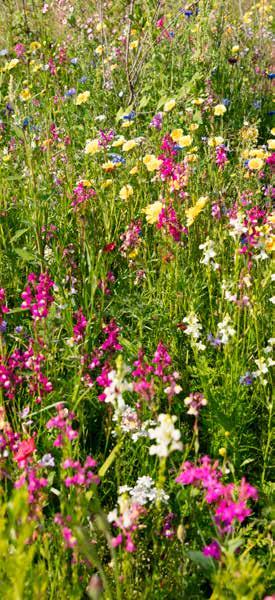
• Supporting fruit growers in planting biodiversity strips. This is done using the LBS method*, a way to mange diseases and infestations in the field. LBS stands for Lokken (Attracting), Behouden (Maintaining) and Sparen (Sparing) of natural enemies. Natural enemies can be attracted by sowing the Invito wild flower mix from Alliance, for example. We stimulate the maintenance of natural enemy populations by offering them places to shelter and spend the winter from Predasect House, and by adapting the crop protection schedules as much as possible to include selective products.
• Offering cultivation contracts such as the one from Mondelez in the context of the Harmony Charter. This Charter specifies that 3% of the ground be sown with strips of flowers to attract butterflies and bees.

• Working on non-monoculture innovations, for example, the continued roll out of the intercropping of yellow pea and wheat, with parcels in Wallonia, Flanders, the Netherlands, and France. This combining of crops reduces the need for fertilisation and limits the impact on biodiversity: Insects and birds find opportunities for sheltering and nesting here.
About soil quality:
As Franklin Roosevelt once said, ‘A nation that destroys its soil, destroys itself’, and we here at Arvesta are also very aware of the importance of healthy soil for guaranteeing the yields of our farmers but also for making them more resilient in the face of climate change. After all, good soil not only ensures better nutrient efficiency, it also results in a better climate buffering capacity, especially with regard to water, which can make a difference in periods of drought and excessive rainfall.
Specifically at Arvesta, we have developed a soil advice module that allows us to propose concrete actions for farmers to take to structurally improve their soil quality in the middle and long terms. After all, getting the soil into optimal condition and then keeping it that way is a project that can take several years. In 2022 alone, some 400 farms received advice through this module.
50
VARIABLE FERTILISATION AND SOWING, WITH GREATER YIELD FOR THE FARMER


















 Matthias Appel Integrated Solutions Manager
Matthias Appel Integrated Solutions Manager
gives us unique added value along the road to the agriculture of the future.
Technology for biodiversity
Varicare ensures that the full potential of the soil, as well as the fertilisers and seeds, can be maximally exploited. Preventing waste is also being sustainable.
In 2021 Arvesta was able to conduct an initial test with three customers. In 2022 we were able to successfully finish the complete validation test on a larger scale and on different soil types. This test
Real-time guidance thanks to technology





Matthias Appel, Integrated Solutions Manager: ‘In modern agriculture, the benefits of technology are becoming increasingly clear and crucial. Sustainability and efficiency go hand in hand. Thanks to technology, it is increasingly evident

Varicare pilot project worked with John Deere equipment. The formula cards could be uploaded directly, and we could follow along, provide explanations, and make adjustments, all in real time, where needed.’

The fact that Arvesta has experts in agriculture and horticulture (via Agri & Horti), on the one hand, and in equipment and machines (via Cofabel), on the other,

























































































In America, John Deere introduced the combine machine, a seeder that also sprays liquid manure. Even if this is not exactly a machine tailored to European agriculture, we at Arvesta are going to give it a try. Couldn’t it be a solution to another challenge? An example of a problem for which a solution has not yet been found is the problem of the seeds with crop protective coatings. Dur to their negative impact on bees and other beneficial insects, these are on the list of prohibited products, but they are tolerated as long as there is no alternative. Our experts are investigating the possibility of replacing the coating with a liquid crop protection product and this could then all be administered in one pass thanks to the combine machine.

51
Supported by technology, we are making agriculture more ecological and more profitable VARICARE:
onze precisielandbouw-service variabele inzaai van maïs Winst:
85 €/ha variabele bemesting in tarwe Winst: + 100 €/ha Haal meer uit uw teelten en machinepark met onze kant-en-klare precisielandbouw-service variabel poten en bemesten van aardappelen Winst: + 400 €/ha variabele inzaai van maïs Winst: + 85 €/ha variabele bemesting in tarwe Winst: + 100 €/ha
+
Using a holistic approach to achieve a reduction in greenhouse gasses

In order to optimise the ecological footprint in a substantiated, comprehensive, and consistent manner, we are working to map out the greenhouse gas emissions for our entire organization. We are doing this according to the Greenhouse Gas Protocol (GHG Protocol) standard.
This standard distinguishes 3 domains/ scopes of CO2-equivalent* impacts and therefore 3 domains in which we can achieve reductions:
• Scope 1: direct emissions, as a direct result of our activities (e.g. burning fossil fuels for heating buildings and for our vehicle fleet)
• Scope 2: indirect emissions, due to the energy we need for our activities (electricity, steam, heat, cooling) and which we purchase
• Scope 3: indirect emissions, which are generated outside Arvesta but which can be linked to our organisation, such as emissions linked to purchased goods, the transport and distribution carried out by suppliers, waste (processing), employee travel, use of sold goods, and emissions from the franchises.
It is up to us to make an inventory for these 3 domains and to then focus on the most impactful opportunities. The sum of these efforts will become our holistic approach to greenhouse gas emissions.
For its reporting, Arvesta opted for operational control; in other words, in those instances where Arvesta can determine the policy, we will also take into account 100% of the emissions.
Arvesta's inventory of CO2 emissions
In 2022, we started making an inventory of our greenhouse gas emissions. Initially, we investigated scope 1 and 2 emissions for the period 2020 to 2022. The scope 1 and 2 emissions together amounted to 36,106 tonnes of CO2e for 2020 and 33,177 tonnes of CO2e for 2022. We based these calculations as much as possible on source data and supplemented this with estimates where data was missing. For 2020, 94% of the calculated emissions are based on source data. Information from various foreign branches could not be collected in time for 2022, so those figures are based on 79% source data.
*CO2-equivalent or CO2e: The greenhouse gas impact of various greenhouse gases, including methane (CH4), is translated into CO2 emissions with a comparable impact, according to the IPCC (Intergovernmental Panel on Climate Change) guidelines.
52
Next steps
Arvesta will take the following steps to further reduce greenhouse gas emissions:
1. We will fully map out the carbon footprint by also calculating scope 3 emissions (emissions within our value chain).
2. We will re-evaluate the reduction target, based on the methodology of the Science Based Targets initiative (SBTi).
3. Based on the carbon footprint, we will roll out the most efficient measures to reduce emissions. We are already strongly committed to reducing our greenhouse gas emissions by “greening” our vehicle fleet (p 64), by working with greater energy efficiency to reduce our energy consumption (p 62), and by reviewing our energy contracts.
Read this, too:
Elsewhere in this Activity Report, we have also illustrated how we use innovative solutions to help make tomorrow's agriculture less CO2 intensive, in particular in those sections where we delve even deeper into specific products and their impacts, such as:
• Haspargit (p. 48): on how we achieve CO2 reductions at the level of raw materials purchasing;
• Euroclim (p. 56) and precision technology (p. 51): on how we achieve CO2 reductions where our solutions are being used;
• Carbon Farming (p. 54-55): on how we help farmers to also contribute to CO2 reduction, because sustainable agriculture and sustainable food is what we ultimately want to achieve with all parties involved – from field to fork.
53
40,000 35,000 30,000 25,000 20,000 15,000 10,000 5,000 0 GHG EMISSIES (TON CO2e) 2020 11,873 24,233 2021 11,696 24,928 2022 11,168 22,009 Scope 2 Scope 1 EMISSIONS (tonnes of CO2e)* 2020 2021 2022 Scope 1: direct emissions of CO2 by: 24,233 24,928 22,009 mobile combustion sources 9,541 9,099 8,402 permanent combustion sources 14,692 15,830 13,607 Scope 2: indirect emissions of CO2 by: 11,873 11,696 11,168 purchased electricity 11,609 11,387 10,859 purchased heating, cooling & steam 263 309 309 Total emissions 36,106 36,625 33,177 ENERGY CONSUMPTION Unit 2020 2021 2022 Fuels (diesel/petrol) litre 3,555,685 3,369,707 3,113,994 Fuels (fuel oil) litre 667,666 926,154 781,083 Fuels (propane) litre 3,000 9,183 9,183 Natural gas MWh 69,867 72,402 62,452 Electricity MWh 72,108 70,729 67,449 Steam MWh 1,397 1,603 1,603 Heat network systems MWh 129 206 206 * rounded figures
CARBON
One of the biggest challenges for the coming decades is to reduce the impact of human activity – our CO2 footprint – on our climate so that our planet remains habitable. The agricultural sector is both part of the problem and of the solution, because not only can we reduce our emissions, we can also increase CO2 storage in the soil by introducing the right practices.
A model that allows Arvesta to support and motivate farmers to keep improving their climate-friendliness every single day
There are solutions to growing crops in a climate-friendly manner, but the impact of these actions or products on the CO2 footprint was not known and there was no incentive for farmers to apply them. By using the Soil Capital platform (a Belgian, B Corp-certified agronomic company that is helping farmers to make 1 million hectares of land more profitable and more ecological by 2025), farmers can calculate the CO2 footprint of their entire farm and are then rewarded, year after year, if they can improve it. By doing this in an audited and certified way, Arvesta can offer farmers an additional source of income based on their climate efforts.
Carbon Farming, better for the climate and for the yield
Farmers who have their footprints calculated at Arvesta automatically become members of the Carbon Farming Club, which offers the following benefits:
• Guidance from our Carbon Farming experts who work with the farmer to plan for short- and long-term CO2footprint improvements
• Guaranteed sales for their certificates
• Access to exclusive cultivation contracts in collaboration with our industrial partners
• Access to exclusive Carbon Farming events where we inspire farmers with new innovations, stories from colleagues, and lectures from our industrial partners
In this way, we motivate farmers to join us in our Carbon Farming story, and we work with them to keep improving every year. In 2022, this generated additional income of € 3,560 for a 100-ha farm. Moreover, the practices implemented not only have a positive impact on the CO2 footprint but also on soil quality and biodiversity.
Industrial partners at the end of the food chain, such as Alken-Maes and several flour mills, are important when it comes to lending even more credibility to the Carbon Farming story. Since Arvesta can supply them with raw materials with a certified reduced footprint obtained via the Soil Capital platform, these partners hope to take steps to realise their sustainability ambitions while at the same time being able to offer their consumers more sustainable products. The added value generated by this is the leverage used to motivate farmers to do better every year.
54
FARMING, AGRICULTURE AS A SOLUTION TO CLIMATE CHANGE and for a fair, sustainable food chain, starting with cultivation
Local product with a reduced CO2 footprint
CO2 FARMERS 2023 42 2025 500 ACREAGE 2023 10,000 ha 2025 50,000 ha REDUCTION 2023 4,500 ton 2025 38,750 ton CERTIFIED CROP 2023 5,500 ton 2025 50,000 ton
In coming years, Arvesta will continue to build on this model by establishing new partnerships with industry, by recruiting more farmers for the Soil Capital programme, and by coming up with new innovations that reduce the CO2 footprint.


Results 2022 and ambitions 2023
In 2022, Arvesta and its partner Soil Capital completed a successful pilot project. Three farmers improved the practices on their farms – their CO2 footprints were calculated via the Soil Capital platform – and after certification, they were compensated for the improvements in their CO2 footprints. Starting in 2023, Arvesta will launch this project on a large scale (10,000 ha) together with partners from the food industry, including La Lorraine Bakery Group and Dossche Mills. Because Arvesta has succeeded in setting up a model that meets the needs of both the farmer and industry, a significant impact on the climate can be expected in the coming years, with an estimated reduction of 4,500 tons of CO2 for 2023 compared to 2022. For the time being, the model can only be used for arable farming and vegetable cultivation, but we hope to add mixed farms with animals in the near future. Interested farmers will receive an initial simulation of what Carbon Farming can do for their farms from their Arvesta representative.
55
1.4 t CO2/ha -23% CO2 0.6 t CO2/ha CO2 100 ha 100 ha 100 ha 100 ha Green cover 70 ha Green cover 100 ha Fertilisation (units N/ha) Fertilisation (units N/ha) Total (per 100 ha): 14,800 units N Total (per 100 ha): 11,350 units N 175 120 100 150 150 145 50 70 120 100 Return + € 3,560
Conventional farm Carbon Farming farm
50% cattle customers use Euroclim by 2025
EUROCLIM leverage for methane reduction in cattle
Belgian agriculture and horticulture are responsible for 10% of greenhouse gas emissions, and 6% of this is produced by livestock farming. There is a broad consensus that we must do something about this 10%. The Flemish Covenant for Enteric Emissions from Cattle makes this concrete: The aim is to employ feed measures to achieve a 13% reduction on that 10% by the agreed deadline of 2030.
In response to the challenge of reducing methane emissions by way of feed measures, Arvesta developed a solution that combines ecology and efficiency: the methane-reducing livestock feed Euroclim.

The Euroclim line is based, among other things, on extruded linseed and rapeseed oil. Studies confirm that its use reduces methane production per cow by 9% per day for dairy cattle (12% per litre of milk) and by up to 30% for beef cattle. The Flemish Covenant recognises and supports Euroclim within the pre-eco scheme of 2022 for a reduction of up to 9% on dairy cattle. In 2023, recognition within the Common Agricultural Policy (CAP) 2023-2027 will follow.
According to the preconditions of the Covenant, practical tests with Euroclim were carried out in 2022 in order to validate this new feeding method, and those trials are successful! Methane reduction
that would have a negative effect on milk production would mean that more dairy cattle would be needed for the same amount of milk. This, in turn, would increase methane emissions, which is certainly not the intention. As the tests showed, this is not the case with Euroclim – on the contrary. In 2022, the technical expertise involved in the applications of the preconditions within the Covenant was further expanded in collaboration with farmers and dairies. In 2023, we should be able, with the necessary support from the chain, to expand even further.
Methane-reducing livestock feed is therefore the leverage for Arvesta's ultimate goal – that 50% of Belgian cattle customers will be using this type of feed by 2025. Because if all dairy and other cattle in Belgium were fed in this way, it would mean a gain of 225,000 CO2. This is the equivalent of the emission of 130.000 cars. In order to maximise these efforts, Arvesta will continue to fulfil its role as a committed link in the chain by continuing to offer solutions for sustainable agriculture and by continuing to inform the retail sector about the evolutions that are underway in the
transition to meeting the challenge they face – sustainable food.
Results 2022
The sustainability dashboard on methanereducing livestock feed shows Arvesta that in 2022 almost 13% of the Belgian Arvesta customers who purchased feed opted for methane-reducing feed. This is approximately the same as the result from 2021. In 2023, Arvesta will continue its efforts to demonstrate the importance of Euroclim to farmers.
56
CH4
Sabrina Damsin Brand Manager Animal Nutrition

We expect a lot from meat – it has to be tender and tasty but also sustainable and animal-friendly. To meet the growing expectations, continuous innovation is a must. That is why Arvesta's livestock feed producer, Dumoulin, together with master wholesaler Bernard Gotta, meat cutter Viande de Liège, and cattle trader Sobemax, took the initiative to establish the Belgian quality label “Pré de chez nous”.

Pré de chez nous is a guarantee of local, sustainable, and delicious beef. With its small ecological footprint – up to


21% lower per kg of meat – and special attention to animal welfare, this meat is unique on the market.
The requirements listed in the Pré de chez nous specifications clearly go beyond the market standard:
• Regarding livestock feed: fatten the animals for at least 100 days with Dumoulin’s methane-reducing Euroclim feed;
• Regarding animal welfare: more light and fresh air in the stables, grooming brushes freely accessible to the animals, and fewer animals per pen;
• In return, the livestock farmer can count on a higher price for the meat.
‘Mmmm, yummy!’
On 25 April 2022, farmers, butchers, the press, and the Federal Minister of Agriculture, David Clarinval, were guests in Fernelmont near Namur, for a premiere: the launch of Pré de chez nous. And, of course, there had to be a tasting. The feedback was unanimous: ‘Mmm, this is really tender and delicious meat!’
At the time of the launch, 5 cattle farms participated, by the end of 2022, there
were 15. The ambition for 2022 was to slaughter 20 animals per week with this quality label. By August of that year, that goal had been achieved. It is clear that this label appeals to the consumer and to the now 30 artisanal butchers that offer Pré de chez nous meat.
The goal for 2023 is to further distribute the meat at multiple outlets and to scale up the volume to 30 animals per week.

57
PRÉ DE CHEZ NOUS Belgian, sustainable, delicious, and responsible meat

FOR OUR PLANET Sustainable entrepreneurship
Together with our employees, partners, and customers, we work on sustainable, safe, and high-quality solutions and services.

59
ANIMAL WELFARE
Healthy feed, healthy animals, healthy livestock farming
Taintstop in quality-label specifications for animal-friendly and delicious meat
With Taintstop from livestock feed brand Dumoulin, the livestock industry has a pig feed with which it can market tasty meat from non-castrated animals. The “Le cochon bien-être” quality label has included Taintstop in its specifications and then brought it to the end consumer via Marcassou. It was a beautiful story of local cooperation and respect for animal welfare. But 2022 was a difficult year. The low market price for pork placed the price for quality meat under severe pressure.
In the meantime, Taintstop has been included in the Colruyt-label specifications for pigs. Arvesta will help the local farmers who have committed to Le cochon bien-être to do the same for Colruyt.
The balance between animal welfare, quality, and price is never achieved once and for all, and as experts we believe that we must continue to take responsibility for this by continuing to search for the best solution using our innovations and expertise.
Koen Nackaerts Sales Manager Pigs
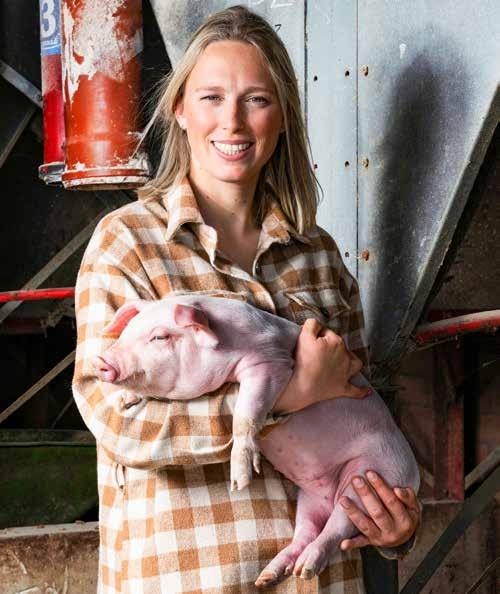
Animal welfare is a default goal in the development of our feed
Koen Nackaerts, Sales Manager Pigs:
‘Animal welfare is always Arvesta's concern. Because healthy animals live longer and perform better. For sows, for example, it is crucial that they are fit for farrowing and lactation. This requires a balanced feed that contains sufficient fibre and is not too concentrated, so that the animal retains its appetite. Pregnant animals in group stables with feeding troughs that are always accessible require a feed that the animals can eat at will. For fattening pigs, the feed must be adapted to their specific genetic intestinal sensitivity. For example, crushed barley may be indicated instead of ground cereals when there are problems with intestinal health. We see it as our job, in every specific context and for each animal, to achieve maximum welfare with our feed. That is why Arvesta has several ranges of feed, each with its own specificity. Where necessary, we adapt them even further until every animal can have a quality life.’

60
ANTIBIOTIC-FREE
by 2028
ARVESTA SUPPORTS PROFESSIONALISATION toward antibiotic-free piglet and chicken farming
There are multiple advantages of Optibalance for intestinal health in chickens:
• its precisely balanced, nutritional composition
• its optimal use of plant extracts: to achieve this we can count on the expertise and products from Palital Feed Additives, another Arvesta company
• its production processes
Arvesta continues to be at the forefront of the evolution towards pig farming without antibiotics
In the field of sustainable feed, Arvesta's experts continue to do pioneering work. In 2022, this again led to the launch of several new products.
SafeMax or PrestaSafe, for antibioticfree piglet husbandry with maximum results
At the end of February 2022, on the occasion of the Agridagen in Ravels, Arvesta officially launched its new health line for piglets under two brand names: SafeMax for Aveve and PrestaSafe for Dumoulin. These new piglet feed lines can be proud of their strong results which are bringing us one step closer to sustainable, healthy, antibiotic-free pig farming:
• A highly efficient feed conversion
• 57% lower piglet mortality
• 50% fewer medicinal treatments needed thanks to improved gut health
The SafeMax/PrestaSafe range – being called Balance 2.0 in the development phase – is a safe and effective feed range aimed at consistent and predictable top results for piglets. The feed is used from weaning until the animals weigh 20 to 25 kilos.
With Optibalance, Arvesta also helps the broiler sector become antibioticfree

On broiler farms, antibiotics are sometimes also used, although not via the feed, to combat infections. Nevertheless, Arvesta also saw opportunities here to control the use of antibiotics through feed. After successful trials in 2021, we launched Optibalance for meat chickens in 2022.
The result? Fewer antibiotic treatments are needed, the welfare of the chickens is improved, and the farmers’ work is simplified. The Optibalance feed line ensures healthier intestinal function, which keeps the bedding on which the animals walk drier longer. The chickens’ skin stays healthier, and the farmer has to change the litter less often.
In 2022, 99.6% of our pig feed production was antibiotic-free. By ensuring that animals remain healthy with balanced feed, we have made it our goal to raise this to 100% by 2028. This means that Arvesta remains some two years ahead of the goals on antibiotic use and resistance formulated by the sector federation BFA.
Dirk Bogaerts, Manager Nutritional Solutions


Filip Van den Bossche, Nutritionist: ‘In the summer of 2022, Arvesta also launched another product range for the meat chicken sector – Optifair. This is a range of feed specifically for slow-growing chickens, and it fits perfectly within the framework of the “better chicken” commitment, which requires, among other things, antibioticfree cultivation.’
Monogastrics: ‘We believe that antibiotic-free cultivation is certainly feasible. However, it is not enough to offer feed solutions alone. Specialist expertise and professionalization on all fronts are just as important. Our expert veterinarians and nutritionists know the challenges and have the know-how to respond appropriately. But the role that our technical advisors play in the field is also decisive. And it will be this professionalism in all areas – nutrition, management, guidance, etc. – and on all topics – infection risk, vaccinations, genetics, fertility, etc. – that will achieve more sustainable, healthier, and antibioticfree pig and chicken farms.’
61
ENERGY
Every kilowatt-hour is counted/counts
RETAIL
Energy savings in Aveve stores with standardised and centralised management
In 2020, Arvesta started a pilot project on energy management at Aveve. This meant connecting two Aveve stores to nanoGrid's energy management platform, where the consumption of gas, electricity, and water was monitored. The quick wins from that pilot project justified a rapid expansion of another 11 stores to bring the total to 13 Aveve stores.
2022: quick wins
The quick wins turned out to be in standby consumption and energy consumption when the stores were closed, for example, for the lighting and/or heating that remained on. We were able to correct this quickly and easily since we could use the nanoGrid platform to control the energy consumption – for example, switching the heating on and off – in all 13 stores at the touch of a button. By standardizing and centralizing energy consumption in this way, we can compensate for human imperfection.
2023: scaling up 200%
Meanwhile, more comprehensive data have been received from all 13 stores for the entire year of 2022. Electricity consumption
appears to have decreased by 14.26% and gas consumption by 42% compared to the reference year 2019. The goal for 2023 is to connect twice as many more stores to the platform.
Solar panels on Aveve stores prevent another 805 tonnes of CO2
With the installation of solar panels (PV installations) at our Aveve stores and Aveve buildings, we were able to avoid another 805 tonnes of CO2 emissions in 2022. The potential relevance of solar panels is always evaluated in new stores and/or stores where renovations are being carried out. These additional PV installations are already planned for 2023:
• In January-February on the Rigaux SA buildings in Mettet
• In May-June on the Aveve Veevoeding buildings in Merksem
In addition to these, there are also franchisees and site owners of Aveve stores who are investing in PV installations. Of course, we applaud them for this. Because, after all, increasing sustainability requires a joint effort and will ultimately be a shared success.
Still more optimisations:
• In 2022/2023, the replacement of the outdoor lighting at the stores by LED lighting will be accelerated. The indoor lighting will be re-evaluated, and motion sensors in common areas will control the lighting.
• The law also contributes,starting from 2022, when transporting money. Coins and paper money may now be combined. That saves a lot of trips.
ARVESTA AS A WHOLE
3,500 tonnes of residual flows became energy raw materials
During production at Arvesta sites, residual flows are created; these are mainly grain residues, maize, chaff, and grass seeds – 3,500 tonnes were given a second life as a secondary raw material for energy generation. In 2022, Arvesta was once again able to increase the use of residual flows in its own processes.
A sustainability score for preferred suppliers
In the summer of 2022, General Procurement finalised and published its sustainability policy and strategy for preferred suppliers, with sustainability criteria that these suppliers will have to meet. In 2023, we will perform a sustainability scan of the suppliers with whom we have a framework agreement. This scan will result in a sustainability score.
Arvesta Energy Ambassadors – for group-wide energy management
In October 2022, the Arvesta Energy Ambassadors project team was launched. Two ambassadors per BU (Animal Nutrition, Agri & Horti, and Retail) and two from HQ form an eight-person team that is committed to economizing energy consumption for all of Arvesta. They meet every two weeks to identify opportunities, seize upon initiatives, and create awareness. More on this in 2023.

62
Arvesta Energy Ambassadors


63
Cedric Jacobs
Indirect Procurement Manager
The overarching mobility plan for all of Arvesta has three goals : less time on the road, smarter and greener on the road, and more sustainability on the road with the company car.
Less time on the road is a direct result of the now well-established hybrid work regime, the essence of the Arvesta Way of Working (AWOW). In 2022, the number of kilometres driven by the passenger cars in our fleet was once again some 20% lower than in 2019.
The bicycle leasing policy is ready
For smarter and greener mobility, Arvesta quickly turned to the bicycle. As early as 2021, during the first phase of our bicycle leasing pilot project, 14 of the 150 workers we asked to partake joined in. Following a second registration round in 2022, another 6 participants were added.
Rebecca Bongaerts, Mobility Manager: ‘The interest is there, and the policy has been worked out. For a wider ranging roll-out, we are now just waiting for an overarching Flexplan.’


Overarching Flexplan is a work in progress
The intention of the Flexplan is to focus on
OUR MOBILITY GOALS
the second pillar of our sustainable mobility vision, namely smarter and greener on the road. With the Flexplan, we offer mobility as a service and give our people the flexibility to choose from a range of mobility solutions, such as a leasing bike, public transport, parking at the station, shared bicycles, shared cars...
Perihan Silay, Reward Manager: ‘The study for this overarching Flexplan will be completed in the spring of 2023. This study will give us a good insight into which salary elements can legally be used for a mobility budget, taking into account the various populations within Arvesta: employees with and without company cars, blue-collar and white-collar workers, and the 10 joint committees. This will make it clear which mobility budgets are possible for which populations.’
Fleet electrification plan: development and test phase completed in 2022
In 2022, Arvesta elaborated the third pillar of its sustainable mobility vision –more sustainable on the road – with the addition of an electric company car, and we completed the test phase. Eighteen Experts in the field with company cars volunteered to be pioneers and joined in the pilot project. They were given an explanation of Arvesta's sustainability vision in the area
of mobility, and they were also extensively informed about the new approach: the new car list, the charging solutions, and the ordering process. They were able to give feedback on all of this. We used this feedback to further optimise and finalise the entire concept. For example, the car list has been adjusted for the wider roll-out, and a FAQ has been developed.
One electric company car was able to hit the road in 2022, and 15 more have been ordered. None of our pioneers chose diesel.
Further electrification of the fleet in 2023
• At the beginning of 2023, the new vision will be communicated to the whole of Arvesta Belgium.
• Out of a total of about 600 leasing cars, about 70 Experts in the field will have the opportunity until May 2023 to order a hybrid or electric car. From May 2023 onward, only electric cars will be ordered.

• Also in 2023, we will address our vision on car management and electrification internationally and roll it out in the Netherlands and France.
A charging station for every electric company car
At home:
Arvesta currently provides a charging station (or a smart cable, for those who are not owners) at home for everyone who orders an electric company car.
At the Arvesta site:
There are already concrete plans for the installation of charging stations at various Arvesta sites – 35 units, to be exact, in the spring of 2023. The quote for another 21 charging stations is being evaluated. An additional 50 are planned for 2023.
Rebecca Bongaerts Mobility Manager
64
Perihan Silay Reward Manager
less, smarter and greener
20% of our company vehicles are hybrid/electric by 2024
MORE SUSTAINABLE TRANSPORT despite extra challenges
To continue optimising its transport, Arvesta is investigating potential efficiency gains in the following areas:
- Centralisation of transport,
- Maximisation of capacity utilisation,
- Optimisation of transport over water, and

- Continuation of the active search for new avenues.
Centralisation of roadway transport –from plan to realisation
In 2022, Arvesta once again took steps toward the network planning we envisage, across its own sites and beyond its own borders. We moved from the study phase to realisation. We centralised four of our own transport entities, including the drivers, externally under one partner, AB-Texel Feed. Obviously, multi-facetted sustainability was an important criterion when choosing a transport partner.
A first result of this centralisation is that we now have a plan to optimise 40% of the empty kilometres – a reduction to 0% would be unrealistic. Additional studies are needed to formulate our further ambitions. The central route planning system, which was delayed in 2022 for IT reasons, will help us with this.
Henk Declerck, Procurement Specialist:

‘For road freight transport, Arvesta is also


investigating which transport company can be its partner in a possible switch to alternative fuels, such as hydrogen, HVO (Hydrotreated Vegetable Oil), bio-LNG, etc.’
• Between the distribution centre and the stores: 10 to 15% fewer trips.
51% over water despite extra challenges
+7.8%
capacity utilisation in
trucks = 25% fewer trips
As announced in 2021, Arvesta started loading more bags of its feed onto each pallet in mid-2022, namely 42 instead of 30. This transition has been done in phases, at the same pace as the transition to the new bags with a more efficient format – simply throwing away the old bags would not have been sustainable either. Even though the new system did not reach cruising speed right from the start, the capacity utilisation of trucks increased by 7.8% in the second half of 2022.
Kris Lalou, Logistics Manager Retail: ‘Since the profit margins went up consistently and we achieved an increase of 15% greater loads during the last month of 2022, the expectation is that we will reach at least this 15% increase every month in 2023, perhaps even +20% is possible.’
Expressed in trips:
• Between the factory in Merksem and the distribution centre in Wilsele: 25% fewer trips. The maximum gain is estimated to be 33% fewer trips.
In the final months of 2021, a problem developed with the availability of barges. In 2022, the challenges of the war in Ukraine were added to this, and in the summer of 2022 the drought reached such a level that even parts of the Rhine became unnavigable. Even though we occasionally had to look for other suppliers, who were not necessarily situated on the water, we were able to organise half of the transport of our raw materials for livestock feed over waterways in 2022. We even did slightly better than the set objective of 50%, namely 52,3%.
Over rail – turning a challenge into an opportunity
In 2022, we also succeeded in turning a challenge into a (commercial) opportunity. With four trains from Ukraine, we conveyed soy twice and maize twice.
Train
Patrick Boone, Director Procurement Animal Nutrition: ‘Sustainable transport is not the only thing the railway guarantees. Since we were able to fulfil the contract despite the war, we avoided having to import less sustainable soy from South America, for example. If you then take into account the fact that a train is equivalent to 75 trucks, we took about 300 trucks off the road.’
As far as Arvesta is concerned, rail remains a strategic option for the future.
Henk Declerck Procurement Specialist
 Kris Lalou Logistics Manager Retail
Patrick Boone Director Procurement Animal Nutrition
Kris Lalou Logistics Manager Retail
Patrick Boone Director Procurement Animal Nutrition

65
from Ukraine
Already >50% of raw materials transported over the water

FOR OUR SOCIETY
Care for our people and consumers
We work together for the well-being and safety of our employees. We strive for the best customer experience through our expertise and are committed to sustainable consumption.

67
ALL TOGETHER NOW towards zero accidents at work Aim for 0 accidents
True prevention takes place on the terrain
Dominique Poelmans, EHS Officer Animal Nutrition:
Martin Coomans Prevention Adviser HQ & Retail

 Dominique Poelmans EHS Officer Animal Nutrition
Dominique Poelmans EHS Officer Animal Nutrition
Because Arvesta has a wide variety of activities under its umbrella, the safety challenges are very diverse. But what remains the same, no matter the activity, is that safety concerns everyone. Safety is everyone’s responsibility – everyone can be a victim, and every accident is one too many. That is why safety is a permanent priority throughout Arvesta, and Safety Sam is our mascot.
Figures for 2022
• In 2022, 36 of the 42 company-owned stores with company staff remained accident-free. Twenty-two of these stores have not had a single accident for 3 years, and 6 of the stores have been accidentfree for 8 years (2,957 days).
• Arvesta's head office remained accidentfree in 2022, as it was the year before.


Every accident is one too many and, at the same time, a wake-up call
Martin Coomans, Prevention Adviser HQ & Retail: ‘One accident with a pallet truck can have major consequences. It shouldn't happen, but when it does it is essential that we learn from it. That is why every accident is discussed in the Prevention Committee, and every accident is a wake-up call for the entire company. After all, safety is never achieved once and for all. When it comes to safety, habituation and routine are the enemies.’
‘We have a Prevention Adviser at every site, the Animal Nutrition advisors hold weekly meetings, we can now rely on the very comprehensive 'Arbeidsveiligheid voor de mengvoedersector' [Occupational Safety in the Compound Feed Sector] manual from BFA and on IDEWE (an external service for prevention and protection at work), we know the European, Belgian, and Regional directives, we undergo audits, and every three months we perform a self-evaluation. There is also a global prevention plan, we carry out risk, accident, and hygiene analyses... The real challenge is always the implementation on the work floor, again and again and again.’
Theory, but above all, practice
In our retail activities and our logistics, most of the accidents are related to lifting and carrying loads. That is why every new store or logistics employee receives training from IDEWE, with some theory of course, but also – essential! – with applications for the work floor. In fact, part of the investments made by Arvesta in 2022 are linked to the problems of lifting and carrying loads.
Campaigns and Investments in 2022
• Instead of developing a manual itself, Animal Nutrition decided in 2022 to purchase the “Occupational Safety for the Compound Feed Sector” manual from BFA.
• In 2022, as part of the progression towards a single, uniform, occupational accident policy for Agri & Horti, the safety issues of all branches were mapped out. The Agri & Horti Prevention Coordinator will then visit, evaluate, and make adaptations at all sites.
• The installation of a smiley speedometer on the company terrain has reduced the average speed from 24 km/h to 17 km/h.
• For Retail, an update of the evacuation plans began at the end of 2022 and continued on into 2023. This was done primarily as a result of an adjustment made to the shop interior.
• In the logistics centre, lifting and carrying work is now systematically alternated with other, less physically demanding work.
• New, sturdy step stools have been provided in the Aveve stores.

68
100% participation
FIT@ARVESTA in mind and body
and with a playful challenge – the smoothie bikes.

Strengthening the connection among all employees
From now on, in an effort to get a better idea of who we do and do not reach, we will look at the individual registrations. In 2022, 48.1% of our Experts in the field participated; our aim is to increase that share in various ways. Stéphanie Deleul, Communications Manager: ‘The goal, of course, is to get people moving and to make and keep them fit, but the interpersonal connection that it entails is also important. To that end, the online predictions for the World Cup were something extra – something that generated the necessary enthusiasm.’
A healthy mind in a healthy body
Stéphanie Deleul Communications Manager
of charities for each one. If the goal was reached, a contribution was made to the charity with the most votes. In 2022, Arvesta donated € 8,250 euros, to Ukraine 12-12 (€ 5,000) and to River Clean Up (€ 3,250).
The main focus of the Fit@Arvesta webinars for 2022 was mental wellbeing:
- Booster Energy, by Dominique Monamie, on how to use your energy, focus and vitality more efficiently;
- Mental Reset, by Elke Geraerts, on how hybrid working and living can strengthen your resilience;

- Changing Habits, by Anneleen De Lille, on how to develop mental flexibility and how to turn frustration into motivation.
Fit@Arvesta in 2023
Fit@Arvesta is the online coaching platform for Arvesta employees designed to help them live a fit and healthy life, both physically and mentally. The tool is practical, simple and, above all, accessible. Exercise, healthy eating and sleeping, mental resilience... it's all covered.
Fit@Arvesta on promo tour at the production sites
One target that Fit@Arvesta had set for itself for 2022 was to reach more blue-collar workers. In order to increase participation , a Fit@Arvesta promotional tour was organised at three production sites (Merksem, Aalter, and Andenne), in close collaboration with the plant managers
In 2022, there were also four sporting challenges for individuals and teams – the Fit Challenges – each of which was linked to a current sporting event such as the Olympics, the Paris and Boston Marathons, the Tour de France, and the World Cup, for example.
For some of the sporting challenges, Fit@Arvesta also launched a group challenge, and we proposed a number
Live + virtual: For creating even more real connectivity, two of the four Fit Challenges in 2023 will be live events, namely the Antwerp 10 Miles and a padel initiation/ tournament.
Outside of Belgium: In 2023, Arvesta will extend the connection beyond our national borders. We will actively appeal to our colleagues from the Netherlands, France, and Germany to “Fit” along with us.
69
Fit@Arvesta
A COMPLETE CAREER REVOLVING AROUND the agriculture of the future
Arvesta is a house consisting of various strong brands. Yet everyone who works at Arvesta has one thing in common – we are all experts in our fields. Experts in the field. Arvesta's challenge as an employer is to find these experts and connect them with one another.

Through our Young Graduates Program, young talent can first participate in various projects in different departments. The wide range of experience they gain in this way allows them to have an even greater impact in their further careers at Arvesta.
Arvesta – Da’s beestig [Now, that’s wild]
In 2022, we worked hard on developing an Arvestawide employer branding. By the end of 2022, the “Da's beestig” [“That’s wild” in English] campaign was ready for a roll out. It has become a campaign in which authenticity is key.
Louise De Wulf, Talent Acquisition Lead: ‘Your employer brand is only strong if your OWN people stand behind it. In order to connect our people with each other and with the organization, we involved them in the campaign.’
Sustainable careers grown here
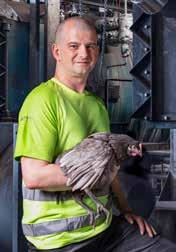
For the careers of its Experts in the field, Arvesta focuses on sustainability.
Anyone who works in an Aveve store and indicates at the start that they want to grow into the position of store manager can participate in a nine-month, Future Store Manager programme.
And at Arvesta, the Arvesta Academy is a source of continuous development for all our Experts in the field. On the digital platform Goodhabitz, there are more than 120 virtual training courses for our people. Those who have leadership ambitions/ abilities will also receive progressive training in three phases – start, grow, and lead – at the Leadership Academy. And that is by no means the only possible perspective. At Arvesta, we certainly encourage internal mobility between the Business Units, sites, and positions.
Every Expert in the field has ownership over his or her own career. Arvesta is the facilitator, and everything is negotiable.
Luna Daenen, HR Business Partner: ‘Because we have various career options


at Arvesta, we aim to also be there before people have taken their first steps into the labour market. Educational institutions, student associations, even radio stations can count on Arvesta to help bridge the gap between talent and work. For example, we gave guest lectures at Thomas More University College, and MNM came here for a day to broadcast live as part of MNM JumpJobs.’
The Arvesta Way of Working
Arvesta’s Way of Working is truly pioneering. From way before COVID, we have known about hybrid working and working from home or from one of our hubs. And we have been working on future-proof jobs even longer than that. Our Fit@Arvesta, for example, has earned us the Baanbrekende Werkgever [Pioneering Employer] 2023 certification as well as that of Best Workplace Transformation.

The HR initiatives and innovations at Arvesta are all data-driven. On the one
hand, we have the career data of 2,300 Experts in the field, and on the other hand, we regularly organise pulse-checks among our people. The goal? To keep our finger on the pulse so we can achieve even more engagement and motivation.
Louise De Wulf Talent Acquisition Lead
Luna Daenen HR Business Partner
70
Recyclable monoplastic packaging? Check.
In 2020, Arvesta had started to switch its consumer packaging for bread and baking mixes from the brands Aveve, Soezie, and Niamh to a 100% recyclable monoplastic. The transition was well thought-out. In order to prevent having to throw away old Aveve packaging after the rebranding –that would not have been very sustainable – the transition was implemented at the same pace as the rotation of products – a total more than 100 products. It is possible that both old and new packaging can still be found on the shelves in Aveve stores,

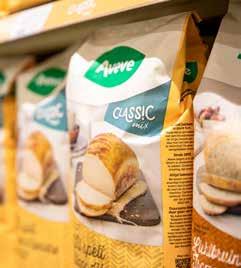
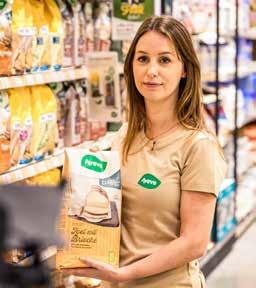
AVEVE FLOWER PACKAGING AND PRODUCTION For ecology, against waste
and it is conceivable that an “old” product, here or there, can still be found on the market, but the transition that started at the production level in 2020 has now been completed.
Dotting the i’s
Aveve Flour is now busy dotting the i’s. A small number of our products are adorned with stickers. In October 2022, we commissioned our label supplier to switch our stickers to 100% recyclable monoplastic film.
Toward (more) sustainable solutions with an inventory

The progress toward a (more) sustainable food chain marches on. We are well aware that plastic remains a contested issue when it comes to the pursuit of sustainability, but food waste is a definite taboo. That is why, today, we have opted for a plastic that is as thin as possible and recyclable and one that guarantees the quality and shelf life of the food products. It is also true that standing still is going backwards. Sustainability
requires and deserves our continued attention. Can we go from recyclable to recycled? (Where) can we reduce CO2 emissions? Where can we recycle byproducts from packaging and production? The first bags produced after the switch of a production line can go to the livestock feed industry, for example, but, for food safety reasons, the 20 tonnes of flour that we suck up every year while cleaning aren’t given the “go ahead”. What are the options there? The search for solutions starts with making an inventory of the challenges. The magnitude of the impact and how far developed the alternatives are will then determine the sequence and speed with which they are addressed. Stijn Donné, Director Aveve Flour: ‘In doing so, we benefit from Arvesta's initiatives, such as the efforts made to grow grain in a sustainable way and to focus on local grain, which is, in and of itself, more sustainable. There is local grain that is suitable for baking bread, and we will market this grain via the products from Aveve Retail and perhaps also externally. The market is certainly interested.’
A (more) sustainable food chain will be the sum of all the next steps that each party involved will ultimately take. Aveve Flour continues to take such steps.
Director
71
Stijn Donné
Aveve Flour
100% consumer packaging bread and baking mixes packaged with recyclable monoplastic film by 2023
Sustainability is about believing in tomorrow. And so is Aveve's sustainability plan. With innovations and solutions for our Aveve stores and our Aveve products, we are making sustainable choices for ourselves, and we are making sustainable choices possible for our customers. That's what we care about, and that's what we act on. We Care, We Act.
Choosing biodiversity
Aveve helps its customers make choices for a more biodiverse garden. How? In addition to traditional crop protection

products, Aveve emphasises natural plant protection with more than 26 products that preserve the biodiversity of gardens. What’s more, Aveve offers its customers the opportunity to give their gardens a “biodiversity boost”. It does this with an increasingly varied range of native flowers and flowering plants, such as those that attract bees and butterflies, with seeds from local horticulturists. With peat-free potting soil that has been developed to simultaneously enrich the soil as well as protect the valuable, yet scarce, peatland. With bee hotels, birdhouses and feeding tables, preferably made from ecological
and recycled materials, for more life in the garden. With suet cakes without a net. With practical tips on pavement reduction and green balconies and on how flower meadows are a much more interesting alternative than the perfectly mowed lawn.
Choosing animal welfare
Aveve helps its customers pay attention to both the welfare and the ecological footprint of animals. How? By producing animal feed without artificial flavourings, colourings or preservatives. With the goal of using 100% certified soy in all our chicken feed by 2026. By supporting animal shelters and other organizations that help animals in need with free animal feed or supplies. With practical tips on how to keep pets happy and healthy. By offering pet food that is close to its expiry date via the food-waste prevention app Too Good To Go. (By the way, we also apply the “Too good to go” principle to plants, because wasting anything is at odds with sustainability.)
Choosing local delicacies
Aveve helps its customers choose local food. How? By stimulating the cultivation of local, sustainable wheat for sustainable flour. This means a crop that requires less fertilization, one that has less impact on
biodiversity thanks to smart cultivation combinations and one that produces fewer CO2 emissions because we work with local farmers. And, for those farmers, we strive for a fair price.
With the “ Landelijk Lekkers [Rural goodies]“ range, we promote traditional products. We put regional specialities in the spotlight. And in the stores and on the Aveve website, we constantly share new tips about nutrition and health.
Peter De Mey Marketing & Category Management Director Aveve

72
WE
CARE ACT DUURZAAM |
DURABLE
AVEVE'S SUSTAINABILITY PLAN choosing biodiversity, animal welfare, and local delicacies


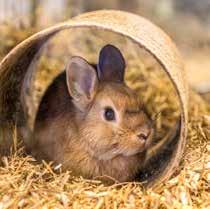


73

74
LOOKING FORWARD
It is Arvesta’s dream to be the highest performing, customer-oriented, agricultural expert in Europe by 2025. An ambitious goal which we will continue to pursue consistently and with a lot of hard work.
After starting the Stronger Together transformation journey in 2017, today we find ourselves in the next phase of our journey, The Next Level. We have come a long way, with all the necessary challenges, but also with the subsequent results – after all, we have continued to grow for six years in a row now.
In the meantime, we continue to look ahead and refuse to stand still. On the contrary... We will continue to function as pioneers in facing the challenges of today. For example, Arvesta's leadership team will help to further concretise the various ESG targets and priorities and further refine them into action plans that we can closely monitor and follow up with our national and international teams. We will continue to create awareness and engagement amongst our employees. We will comply with the new targets and ambitions within the framework of the Corporate Sustainability Reporting Directive (CSRD). And we will do all this together with, and thanks to, the combined forces of our 2,300 Experts in the field. We are here to stay!
75
The Leadership Team
APPENDIX: INDICATOR DEFINITIONS / SCOPE / EXTRA INFORMATION
1. Sustainable soy DEFINITION SCOPE
Share of the total mass of conventional soy meal purchased by Arvesta's Belgian entities that is sustainable, either because sustainable soy certificates were purchased or because the soy was grown in North America.
Conventional soybean meal for all of Arvesta's Belgian brands and entities.
2. Water savings
DEFINITION SCOPE
Annual water savings by farmers and horticulturists thanks to innovative developments by Arvesta.
All of Arvesta's innovations that result in the saving of water within the value chain. Currently, the most significant water savings are achieved through Hortiplan's Mobile Gully Systems (MGS) and Van der Hoeven's greenhouse systems.
EXTRA INFORMATION
Certificates purchased: CRS - Certified Responsible Soya credits, RTRS credits, SFAP NC / Argentine sustainable soy credits.
EXTRA INFORMATION
Water savings are calculated by considering the difference between the actual expected consumption (thanks to the innovation) and a reference consumption (without Arvesta's innovation). In doing so, the following assumptions were made:
1. Hortiplan:
• MGS water consumption is 500 litres/m², based on studies by the Department of Agriculture & Fisheries and the ILVO. Based on our expertise, this estimate is conservative.
• An MGS provides for water savings of 89%. This is the average water savings reported by 6 growers working with MGS (min = 80%; max = 95%).
2. Van der Hoeven:
• Actual water use and reference use were calculated based on the academic literature. The calculated water savings takes into account the crop, the climate, the type of greenhouse system, and the water source used.
76
3. Livestock feed with a positive impact on methane emissions DEFINITION
Share of Arvesta's cattle customers in Belgium that buy methane-reducing feed or additives.
SCOPE
All cattle customers in Belgium.
7. Hybrid or electric vehicle fleet DEFINITION
Share of hybrid or electric company vehicles in Arvesta's fleet, excluding temporary cars for newcomers.
SCOPE
Company cars of all Arvesta employees. Light trucks and temporary cars for newcomers are not taken into consideration here.
4. Reduction of CO2e
DEFINITION SCOPE
Reduction of greenhouse gas emissions within Scopes 1, 2, and 3 relative to 2020 as the base year, in conformity with the GHG protocol.
5. Antibiotic-free feed DEFINITION
Share of the total mass of livestock feed for piglets, fattening pigs, and sows that does not contain antibiotics.
Scopes 1, 2, and 3 emissions from Arvesta, in conformity with the GHG protocol.
8. Aim for zero accidents at work DEFINITION
The number of occupational accidents resulting in absence from work per year involving Arvesta's permanent staff and job students.
SCOPE
All Arvesta employees and job students.
SCOPE
Piglet and pig feeds from Aveve, Dumoulin SA, and Dumoulin NV.
9.
Fit@Arvesta
DEFINITION SCOPE
Percentage of Arvesta permanent employees, job students, and contractors who have registered on the Fit@Arvesta platform.
All Arvesta employees (permanent personnel, job students, and contractors).
6. Transport by water DEFINITION
Share of the total mass of materials imported in bulk to the waterfront locations of the Animal Nutrition BU and the Agri & Horti BU that arrive by barge.
SCOPE
All incoming bulk products imported to waterfront locations for all brands within the Animal Nutrition BU and the Agri & Horti BU. BU Retail is not taken into consideration here.
10. Recyclable packaging DEFINITION
Share of stock-keeping units (SKU) produced by Aveve for flour, bread, pasta, and baking mixes with recyclable packaging (recyclable mono-plastic packaging (RMP) or recyclable paper packaging), including all labels and stickers attached to the products.
SCOPE
Flour, bread, pasta, and baking mixes from the Aveve, Niamh, Soezie, Belcampi, and Private Label brands.
77
EDITORIAL INFORMATION
Reporting period:
Publication of the Activity Report 2022 in 2023 | 1 January 2022 – 31 December 2022
Publication management: Stéphanie Deleul (Arvesta)
Sustainability advice: KPMG België (www.kpmg.be)
Concept and creation: Katrien Van Cauwenberghe (www.katrienvancauwenberghe.be)
Editor: Nadine Van Meerhaeghe (www.pheidippides.be)
Translations: Elan (www.elanlanguages.com)
Photography: Ben Celis (Arvesta) & Jonathan Vahsen (www.jonathanvahsen.be)
Printed materials: Duurzaam drukwerk | zwartopwit.be
Questions or feedback?
Contact:
Stéphanie Deleul, +32 (0)476 94 35 65 stephanie.deleul@arvesta.eu
For more information: www.arvesta.eu
78
Ubicenter
Philipssite 5/b 3
3001 Leuven, Belgium
info@arvesta.eu
www.arvesta.eu

Stéphanie Deleul
Communications Manager

+32 (0)476.94.35.65
stephanie.deleul@arvesta.eu














































































































































































 Kris Lalou Logistics Manager Retail
Patrick Boone Director Procurement Animal Nutrition
Kris Lalou Logistics Manager Retail
Patrick Boone Director Procurement Animal Nutrition




 Dominique Poelmans EHS Officer Animal Nutrition
Dominique Poelmans EHS Officer Animal Nutrition




















